Previous post
Now reading
20 best things to see and do in Nuremberg, Bavaria

Nuremberg is a historic picture-book town in Bavaria, south-east Germany. The city is filled with a rich heritage, majestic charm, medieval streets and fascinating museums. In the winter, Nuremberg is transformed into a sparkly fairytale, hosting one of the oldest and most famous Christmas markets in the world. As you will see from the photos, it snowed during my trip, which made the city look even more magical. Here are my top 20 picks for the best things to see and do in this Bavarian gem…


Nuremberg Card – your golden ticket to exploring the city
If you are staying in Nuremberg for atleast 48 hours, I highly recommend you get a Nuremberg Card. For only €33, you have access to the following benefits over a two-day period:
You can order a card directly on the tourist board’s website, or from the tourist information offices in the city.
Nuremberg Castle, or Kaiserburg, is the most famous landmark of Nuremberg. This is the perfect spot for beginning of your tour through the Old Town’s cobbled streets, given its history and prime location.
During the Middle Ages, the Imperial Castle of Nuremberg was one of the most important imperial palaces in the Holy Roman Empire. For centuries, it was the symbol of European history and in modern times, the extensive castle complex is famous across the world as the symbol of Nuremberg. The museum and dedicated exhibitions explore the history of Nuremberg Castle.
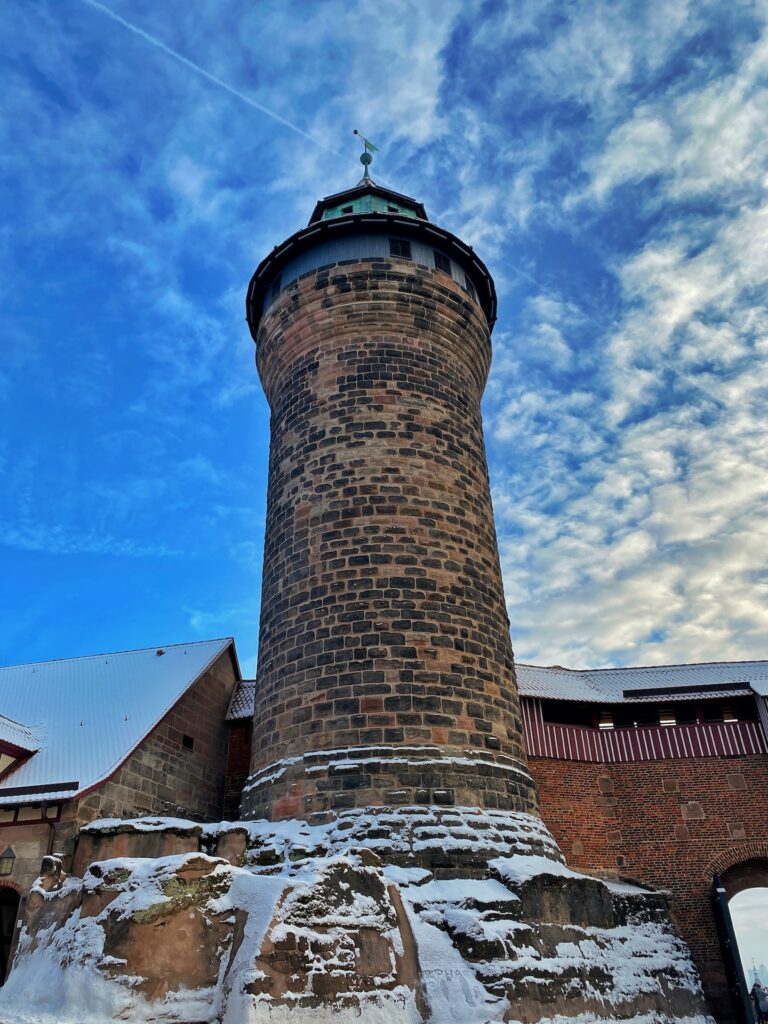
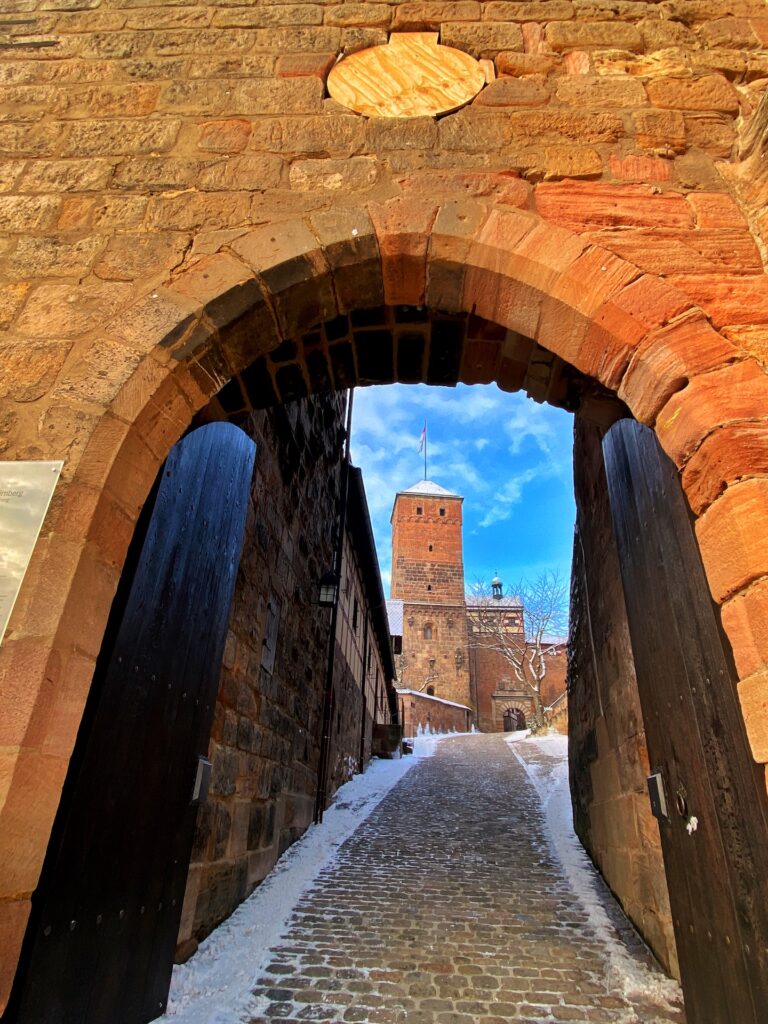
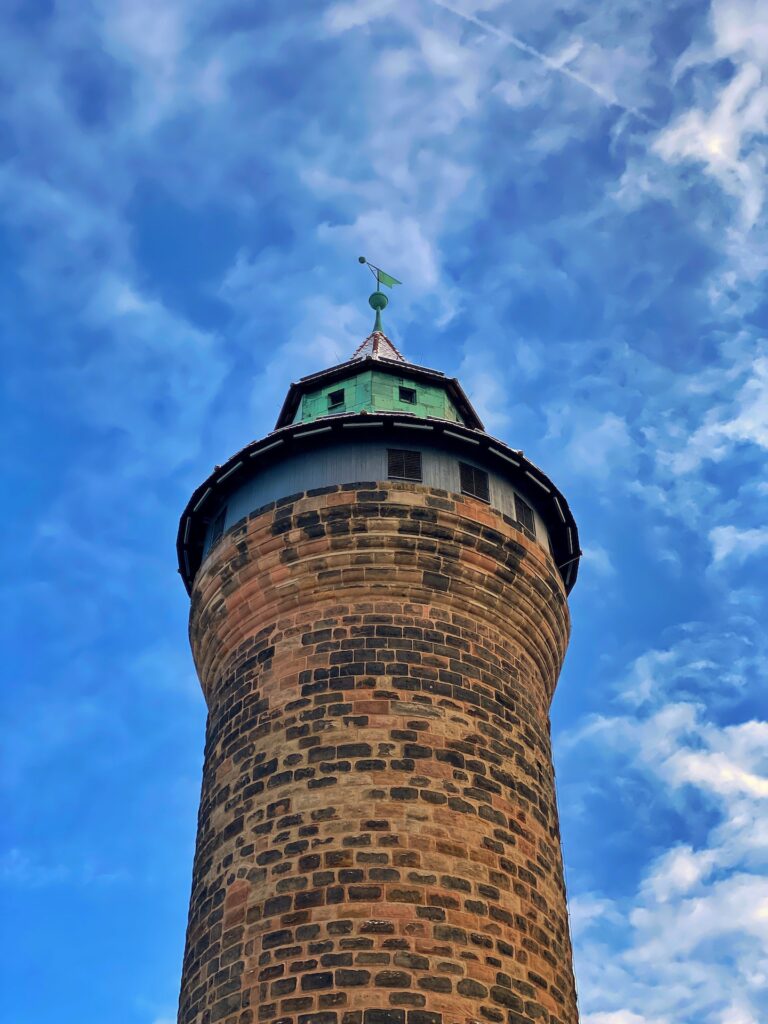
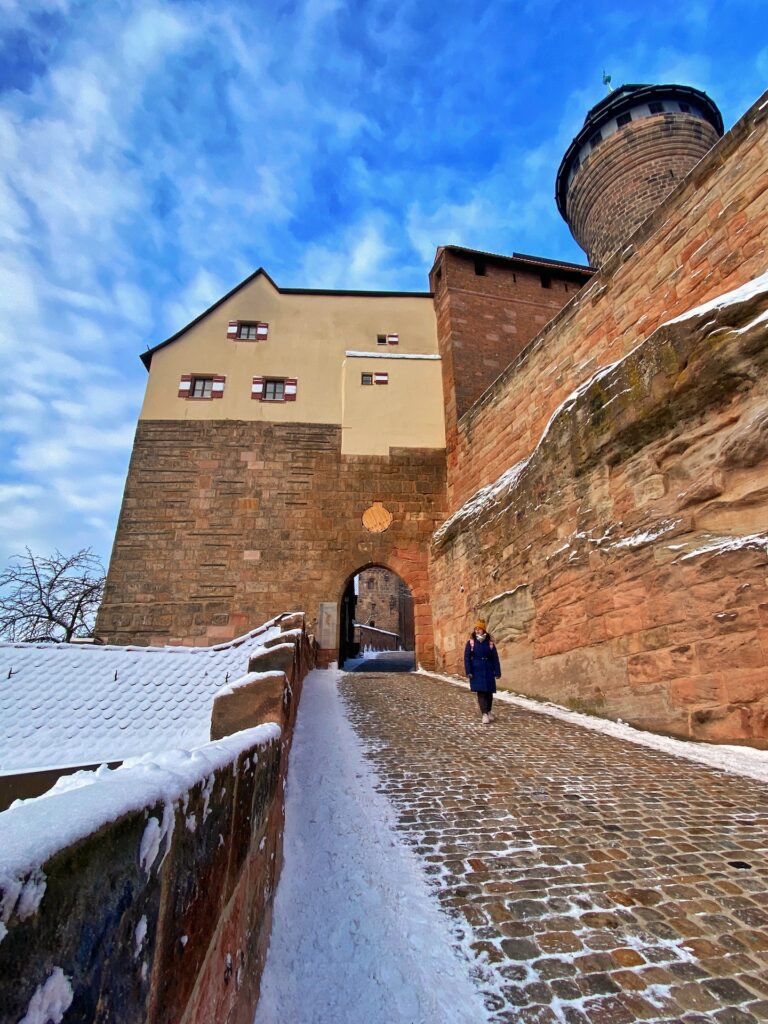
Sinwell Tower was built in the late 13th century. Climb up the 113 spiral staircase for the best panoramic views across the entire city. It snowed during my trip which provided an enchanting fairytale-like view…

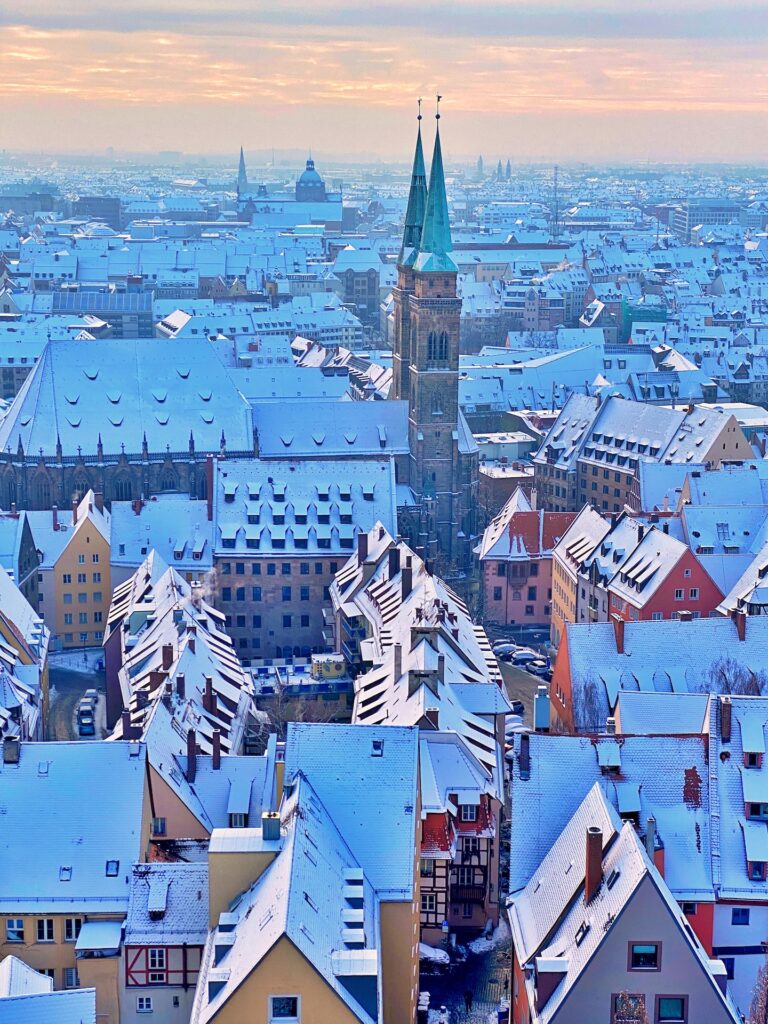
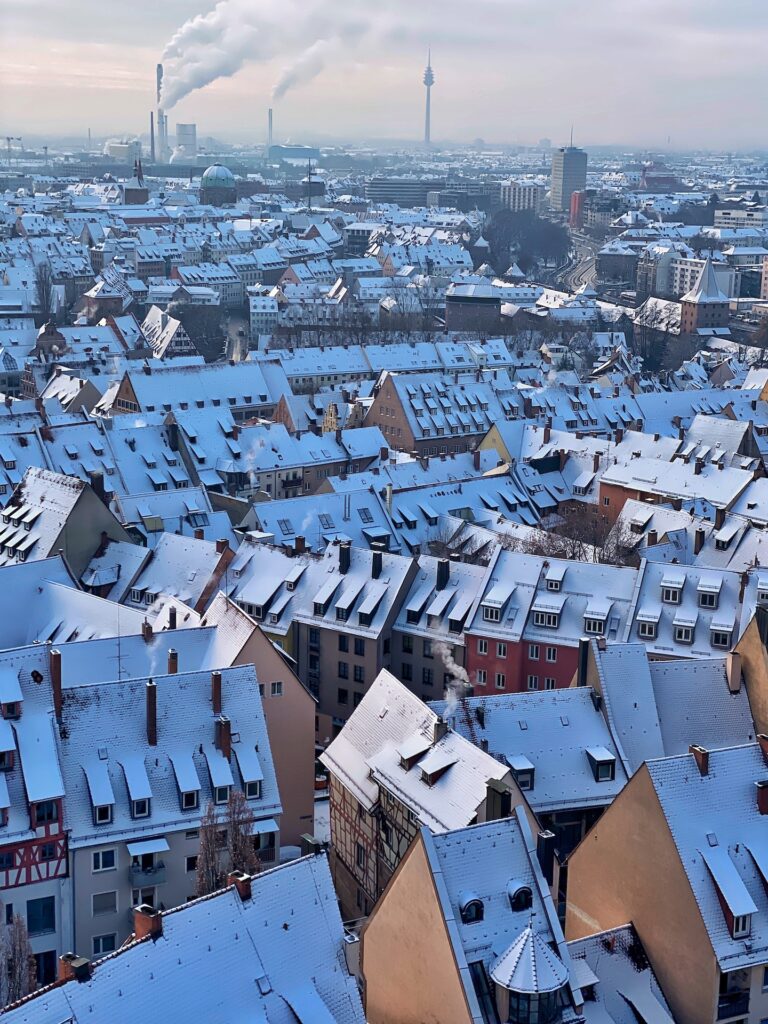
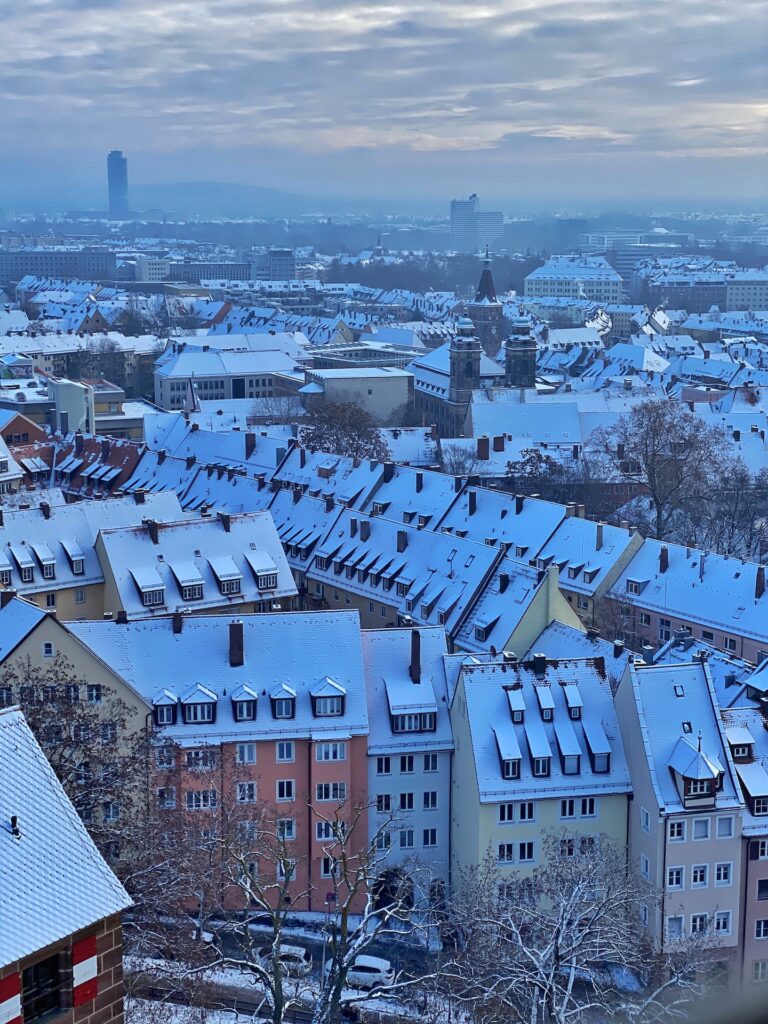

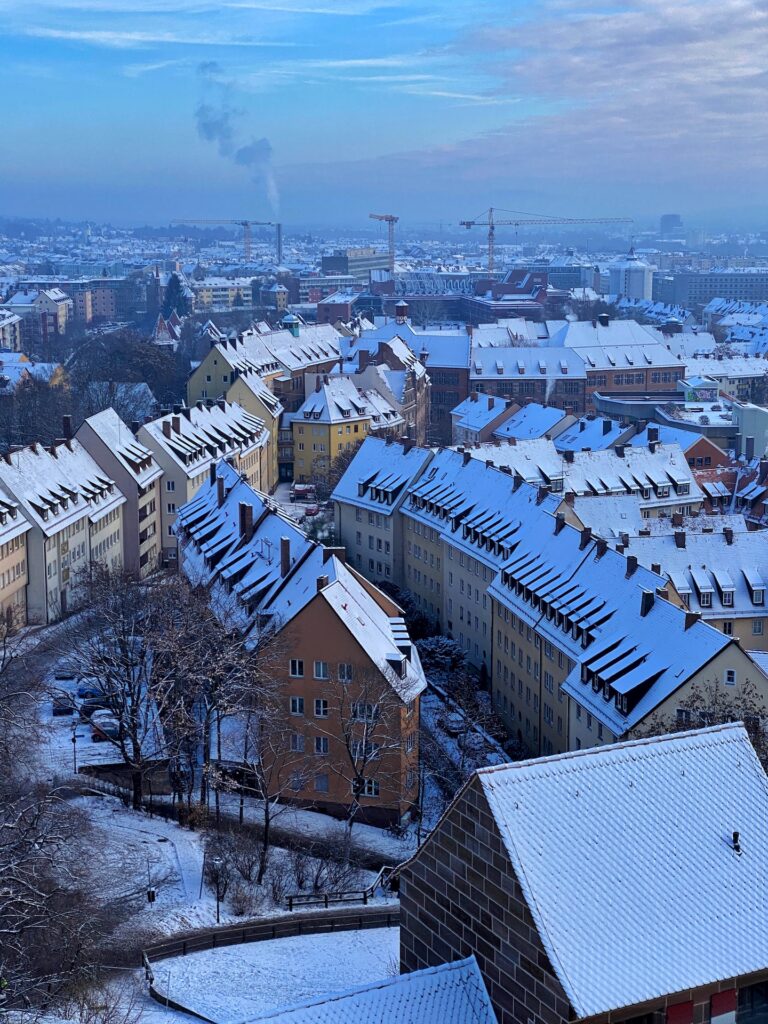
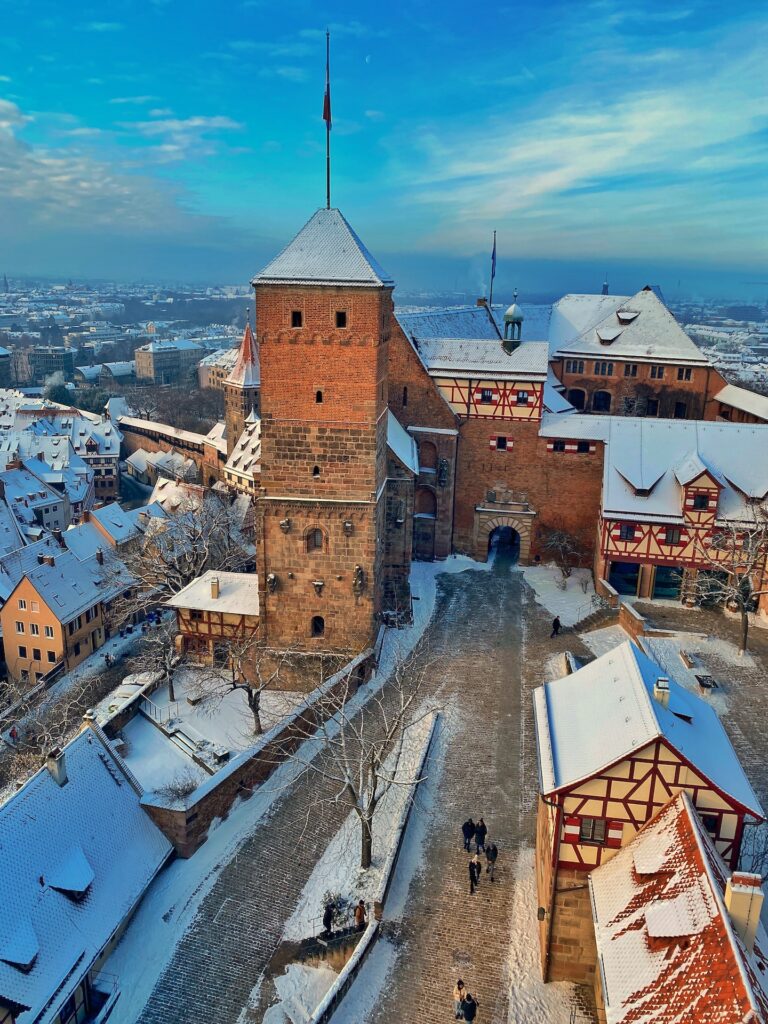
This street is the largest ensemble of old artisan houses in Nuremberg. In modern times, this is now a popular alley with cafés, bars and boutiques. This is definitely the most picturesque street in the city, so be sure to have your camera at the ready to capture some pretty scenes!

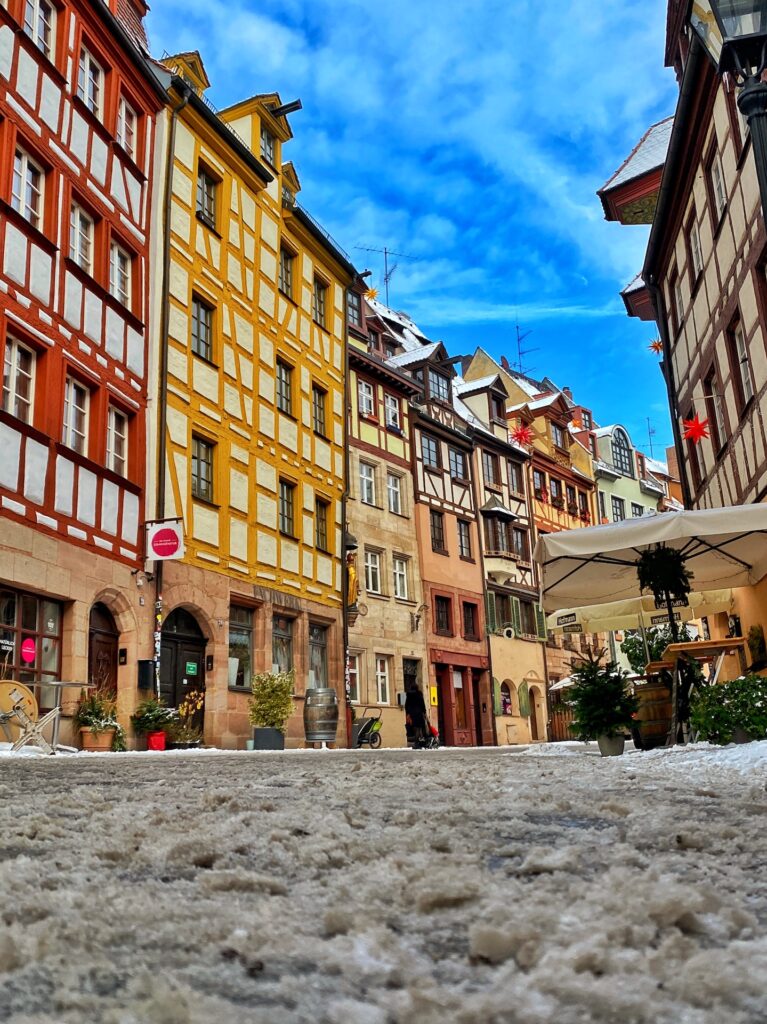
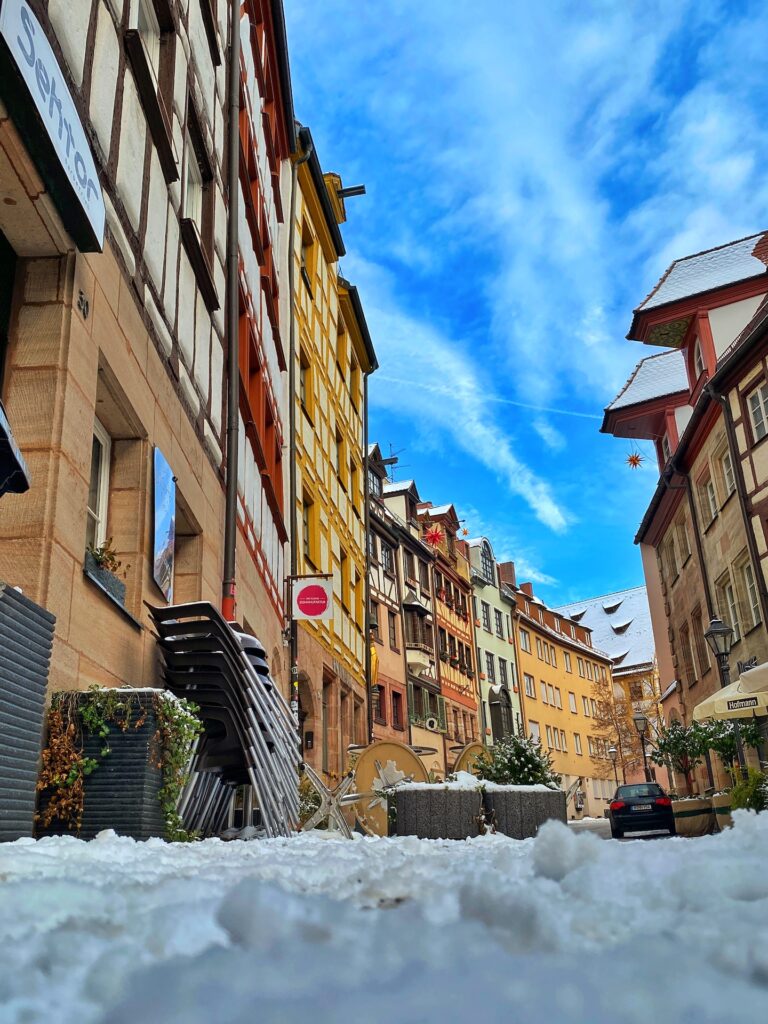


In medieval times, every German city used to have a hang man and Nuremberg’s one lived in the tower on the roofed bridge, above the Pegnitz River.
Hangman’s Bridge, constructed in 1457, is a wooden bridge. It is a picturesque spot, with a scenic and quaint surrounding area.

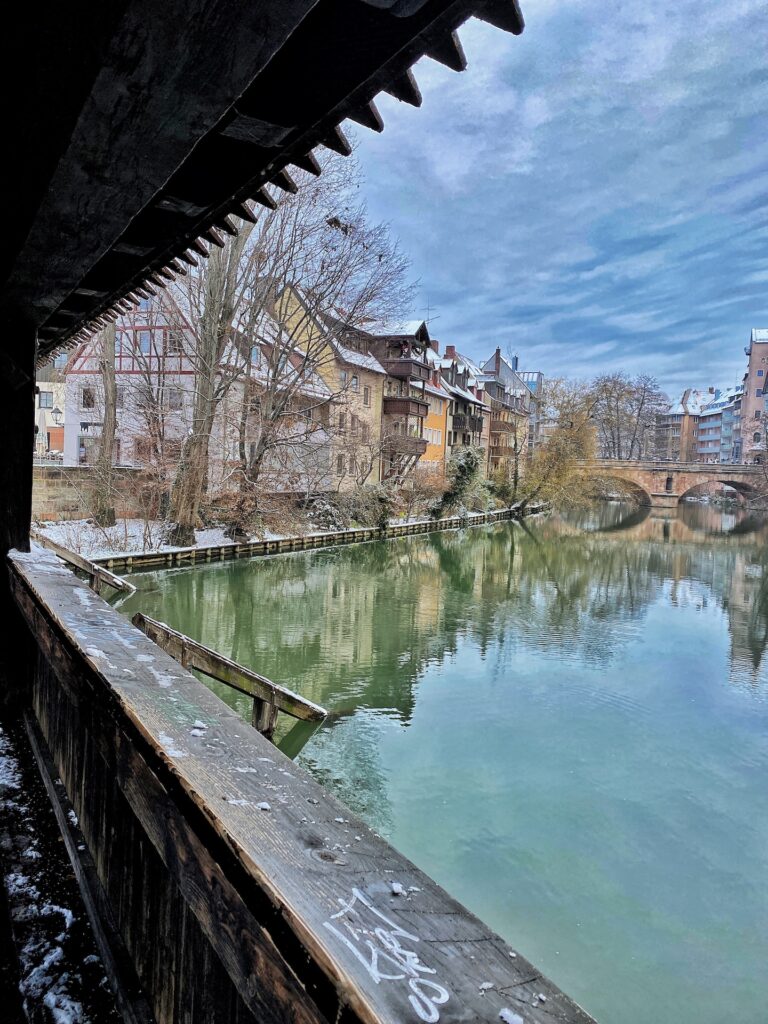
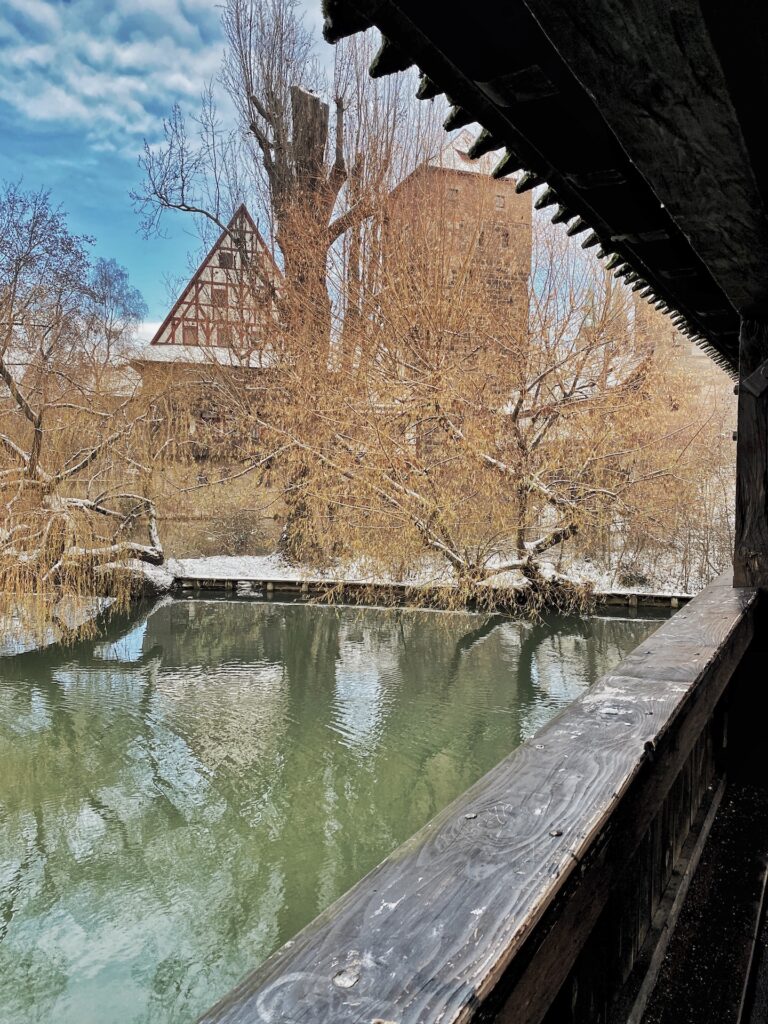
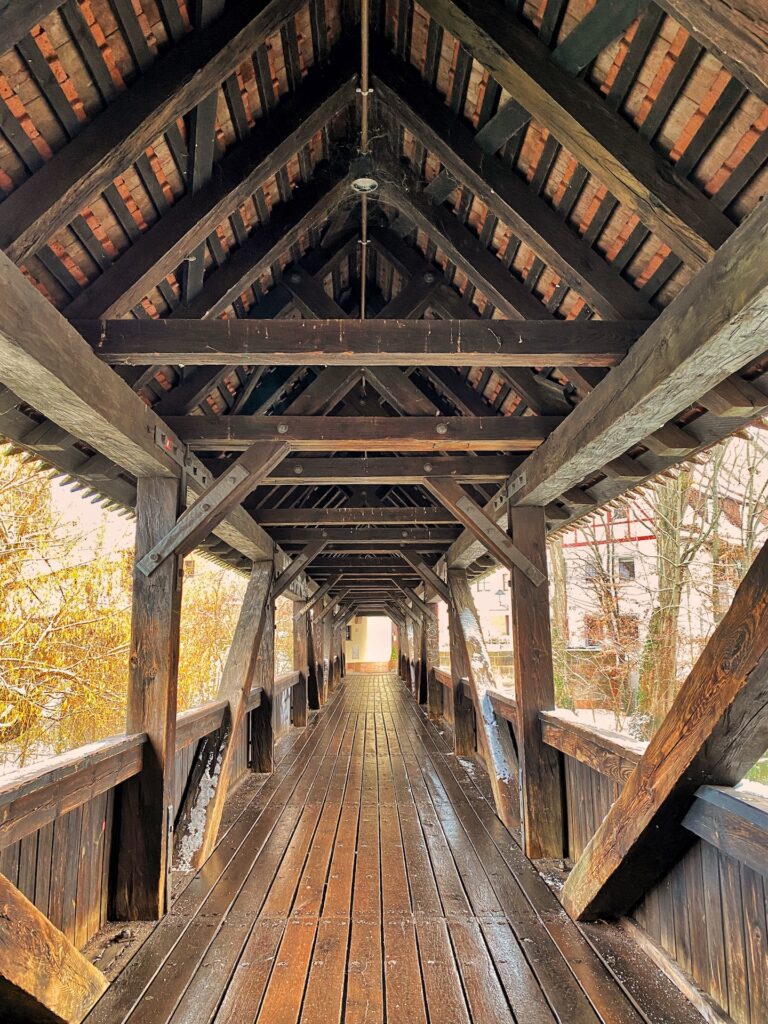
The Nuremberg Christkindlesmarkt is one of the oldest and most famous Christmas markets in the world, dating back to the 16th century.
The market hosts over 160 red and white wooden booths, which when I visited, were covered in pristine snow! The stalls are lined across the Hauptmarkt selling traditional delicacies, toys, treats, ornaments, art, gifts and lots more, and attract over two million visitors every year.




I visited over a few days during different times – the morning, afternoon and evening. If you have enough time, I highly recommend you do the same, to experience a different Christmassy vibe each time.
If you hear the sound of bells and the clatter of hooves, these will be a sign that the stagecoach is at the Christkindlesmarkt. This is a yellow horse-drawn carriage, pulled by two Rheinland Heavy Draft horses, and is a part of the Christmas market tradition in Nuremberg.
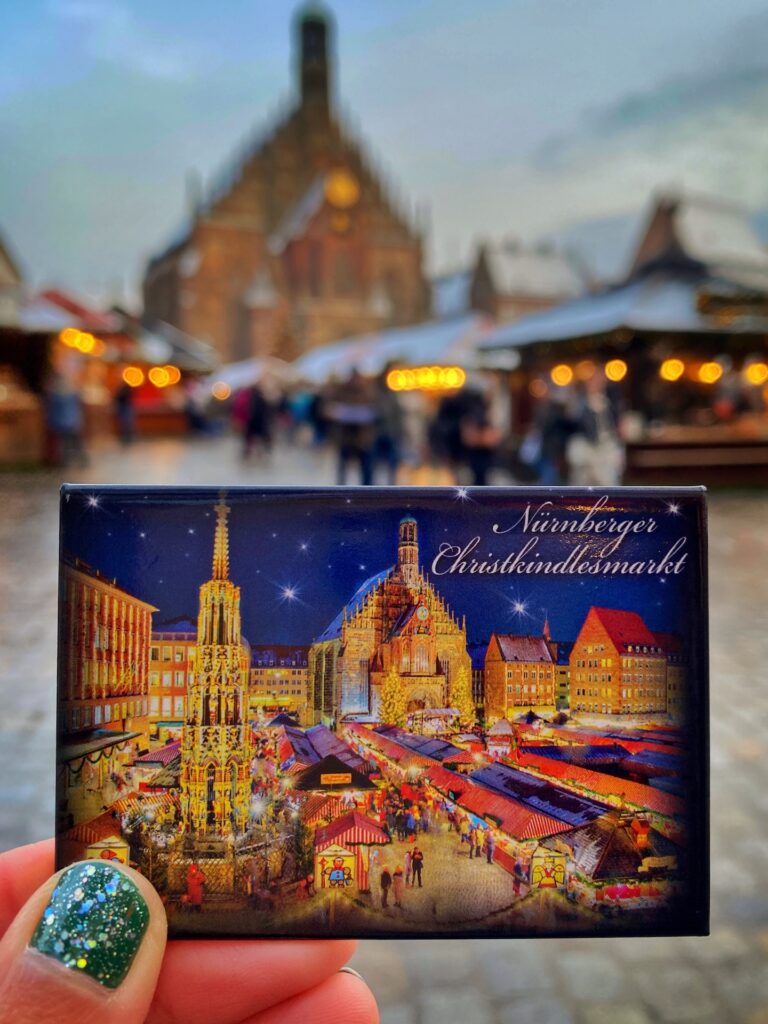

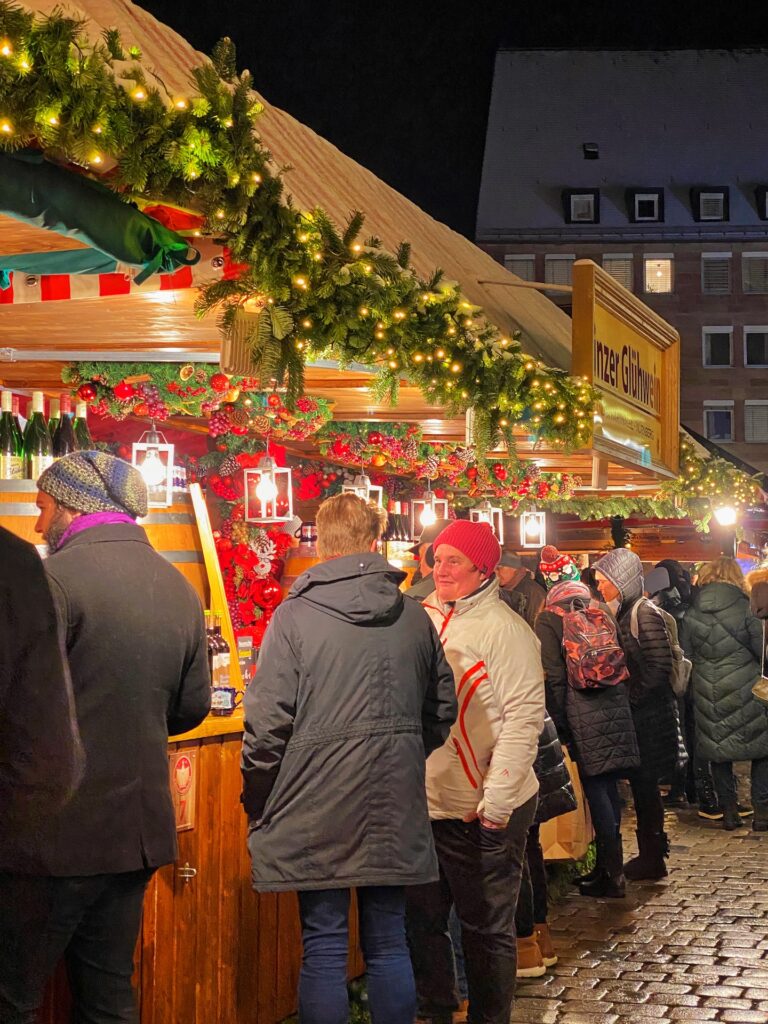
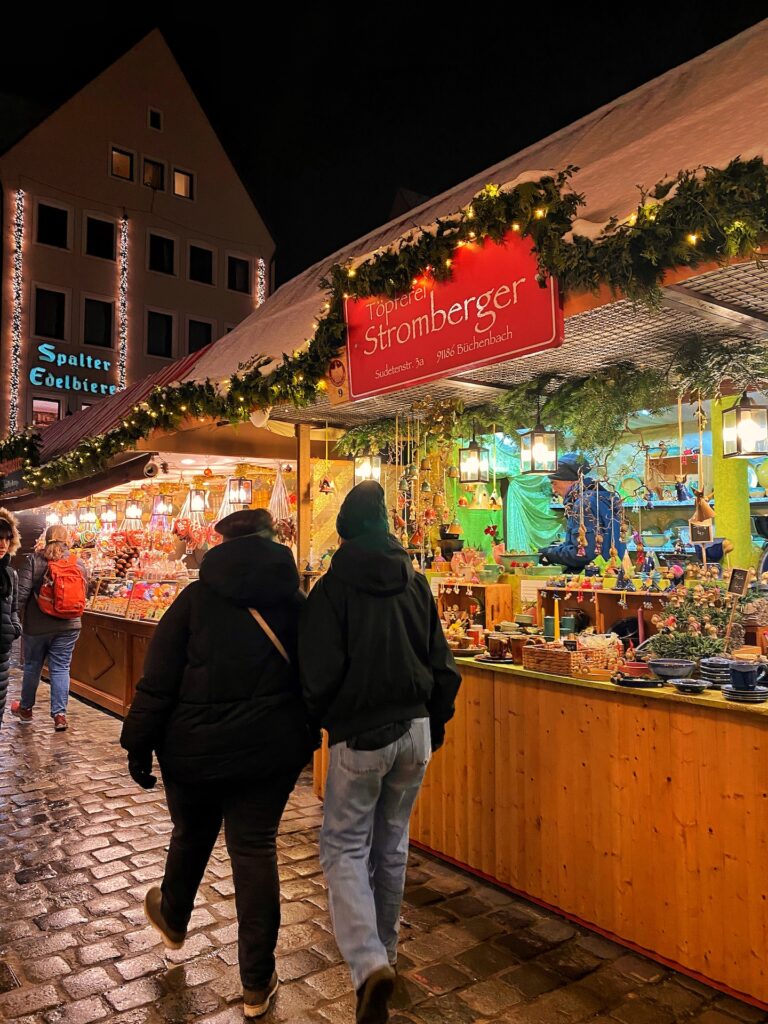

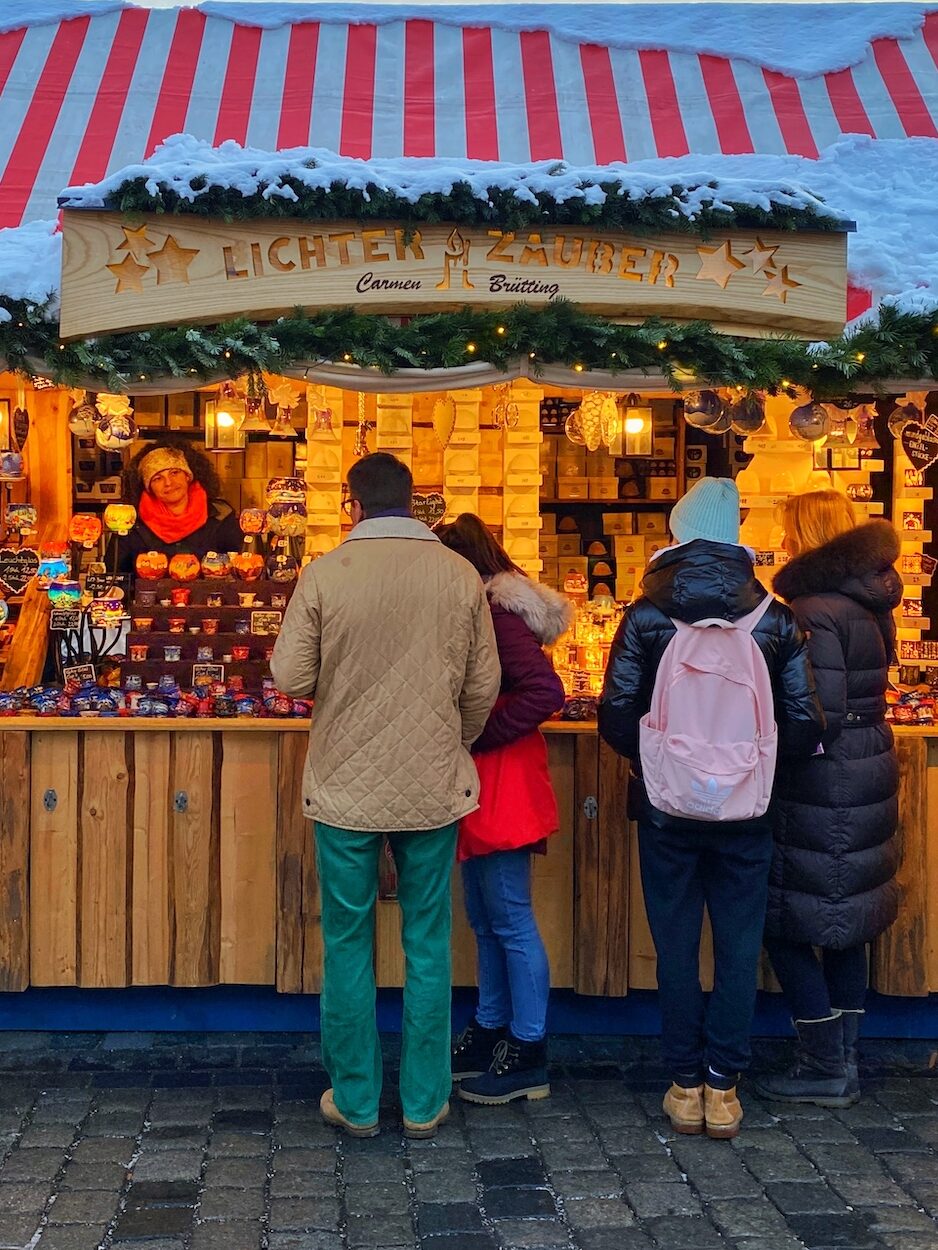
Top tip when visiting Nuremberg’s Christmas markets – order a mulled wine, punch or a hot drink in a festive mug, and you can then keep the mug as a special souvenir!
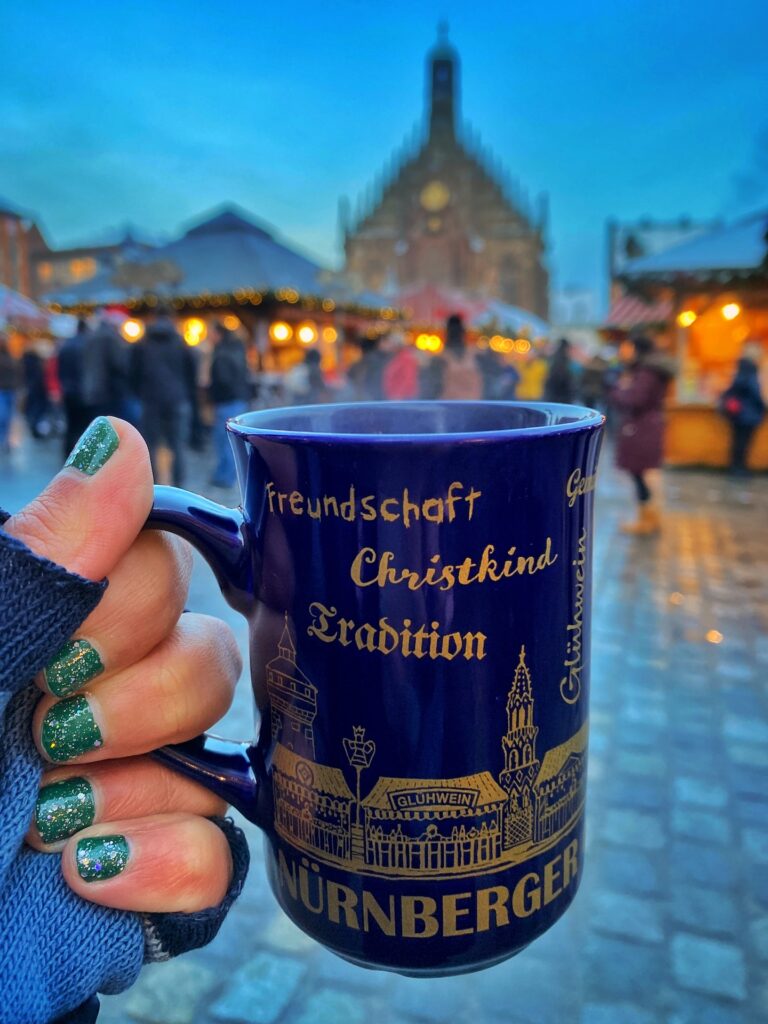
Albrecht Dürer was Germany’s most famous artist. He lived and worked in this half-timbered house from 1509, for nearly 20 years. This is the only surviving 15th century artist’s house in Northern Europe and one of the few merchant houses left from Nuremberg’s Golden Age. The house has survived largely in its original form, which opened to the public as the world’s first memorial to an artist in 1828, and then became a museum in 1871.
Today, Dürer’s most-famous paintings are dispersed across the world’s art museums, of which Nuremberg has been collecting copies since the 1600s. The house contains rare pieces of Dürer’s paintings and art collections.
The tours are led by an actress playing Dürer’s wife, Agnes, and the workshop includes demonstrations of historic printing techniques.

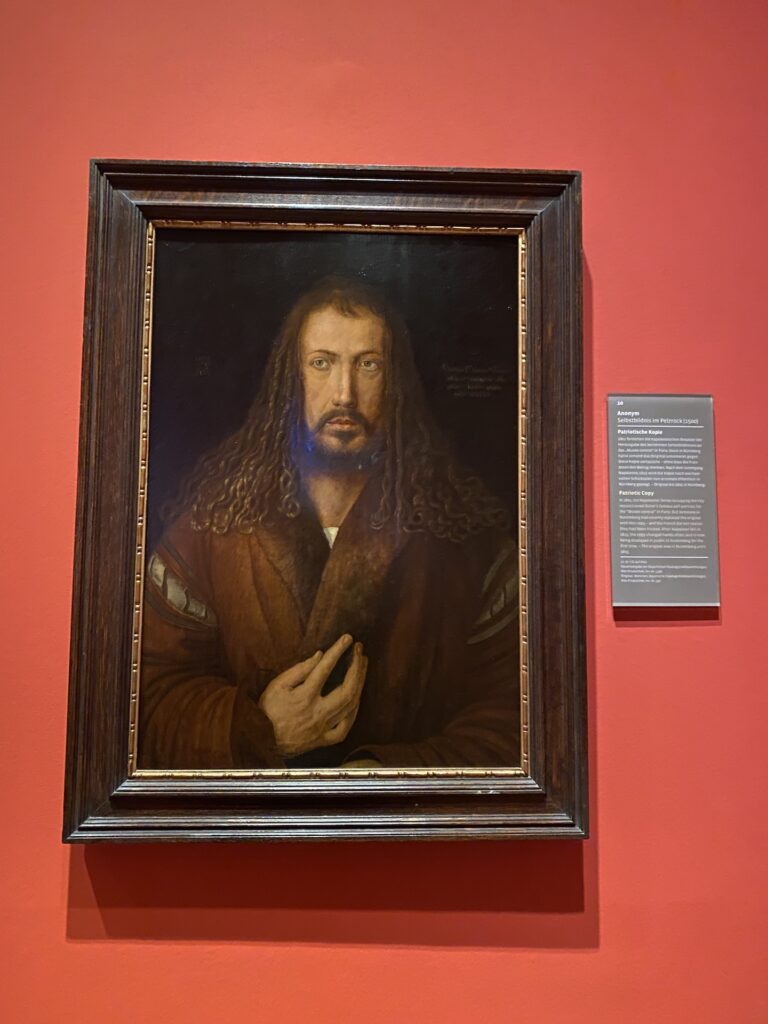
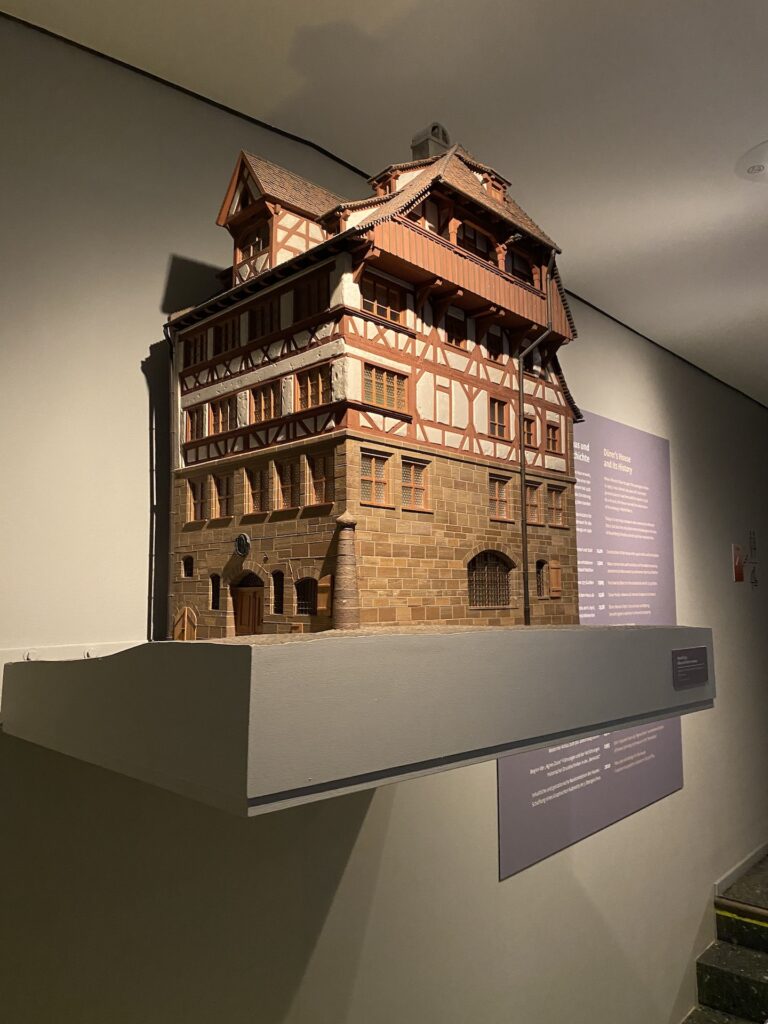


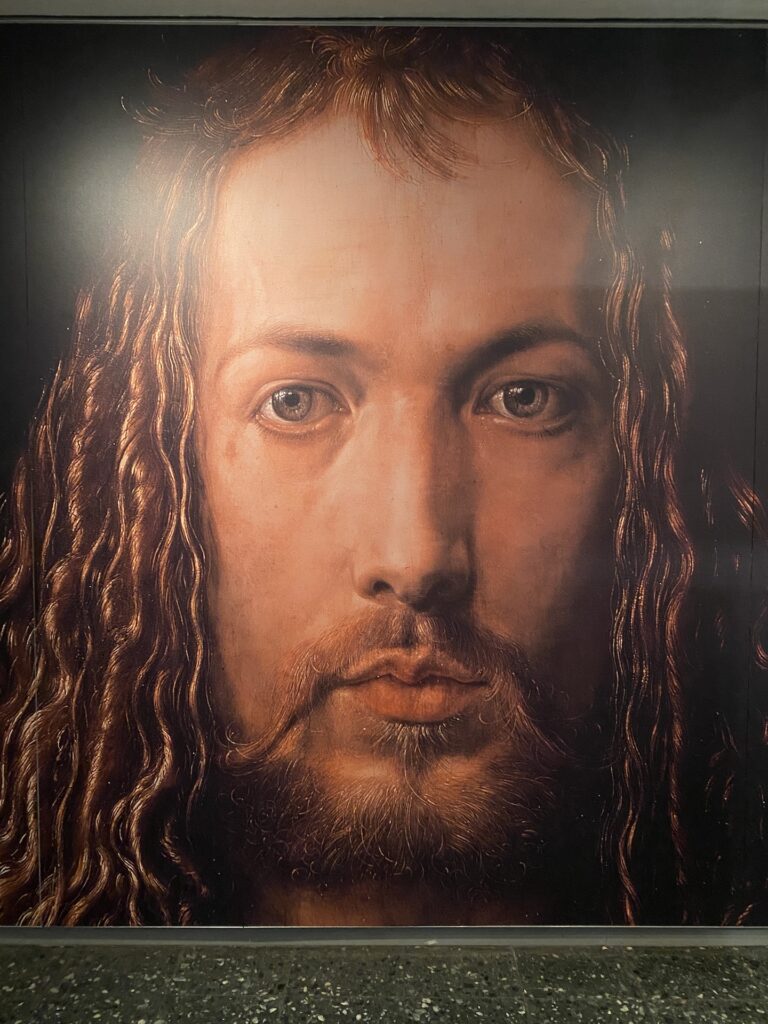
The historic city walls are the medieval defensive mechanism surrounding Nuremberg. The walls were constructed from the 12th century, measuring 5km around the Old Town.
You can even go on a guided 1.5 hour walking tour of the Old Town, which will give you a fascinating insight into this former imperial residence and the international trading centre.
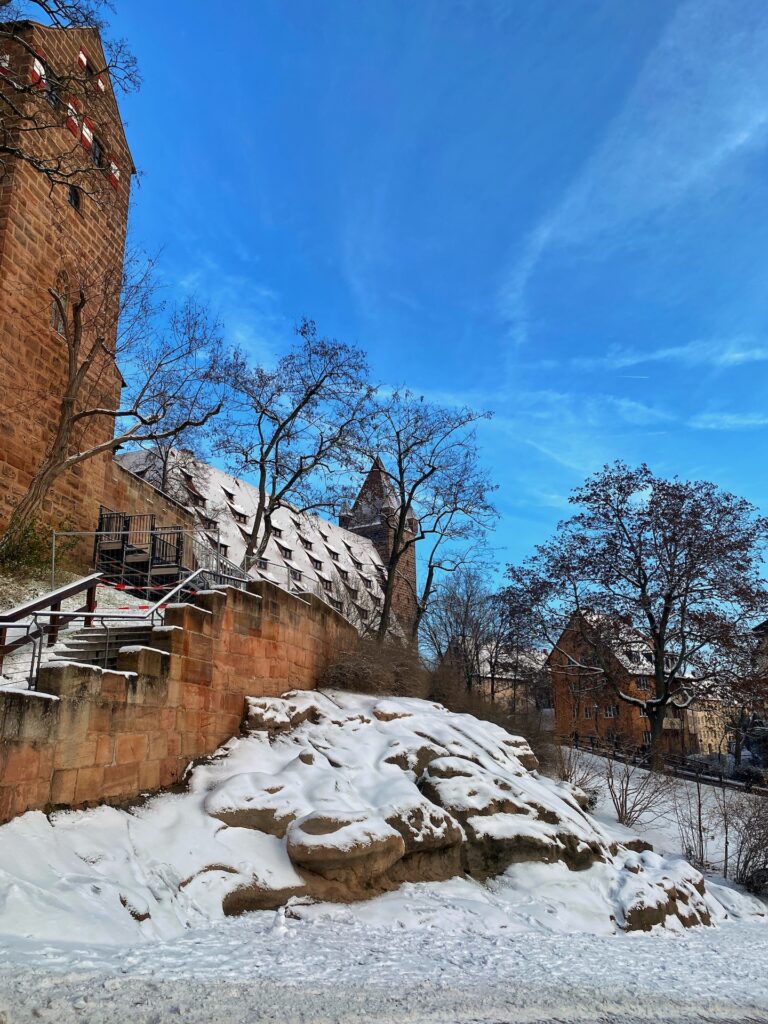
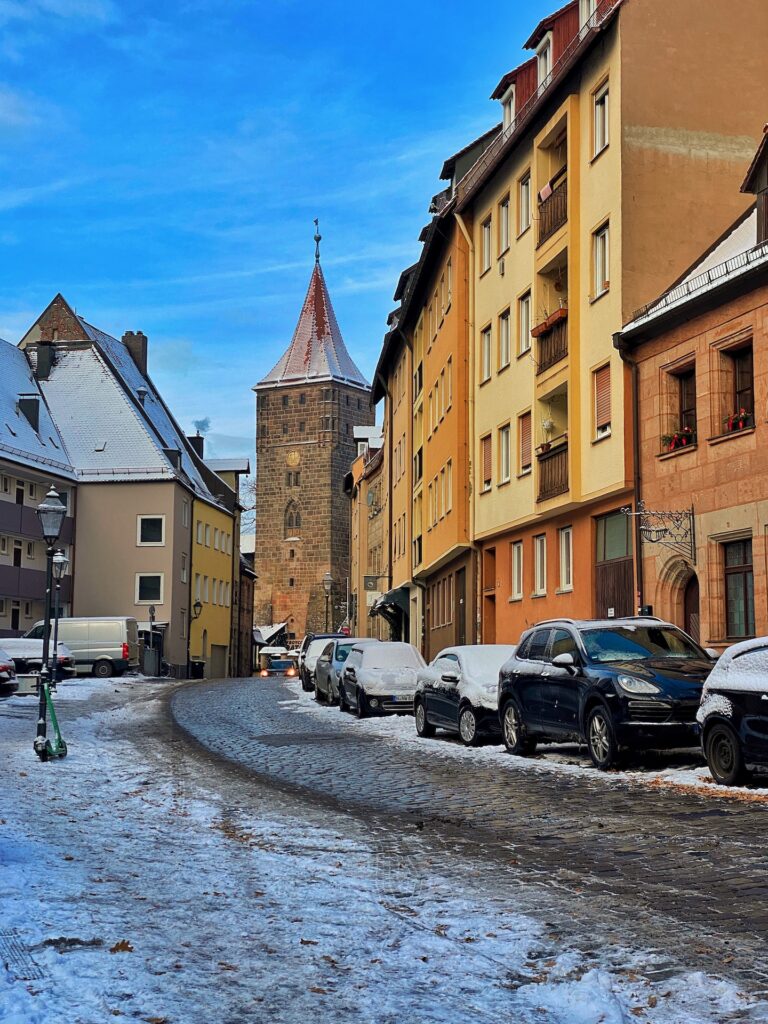
Founded in 1882, the DB Museum is the oldest railway museum in the world. It does an impressive job in telling the history of the railway in Germany, with the original vehicles on display.
Fun fact – Germany’s first railway was between Nuremberg and Fürth!

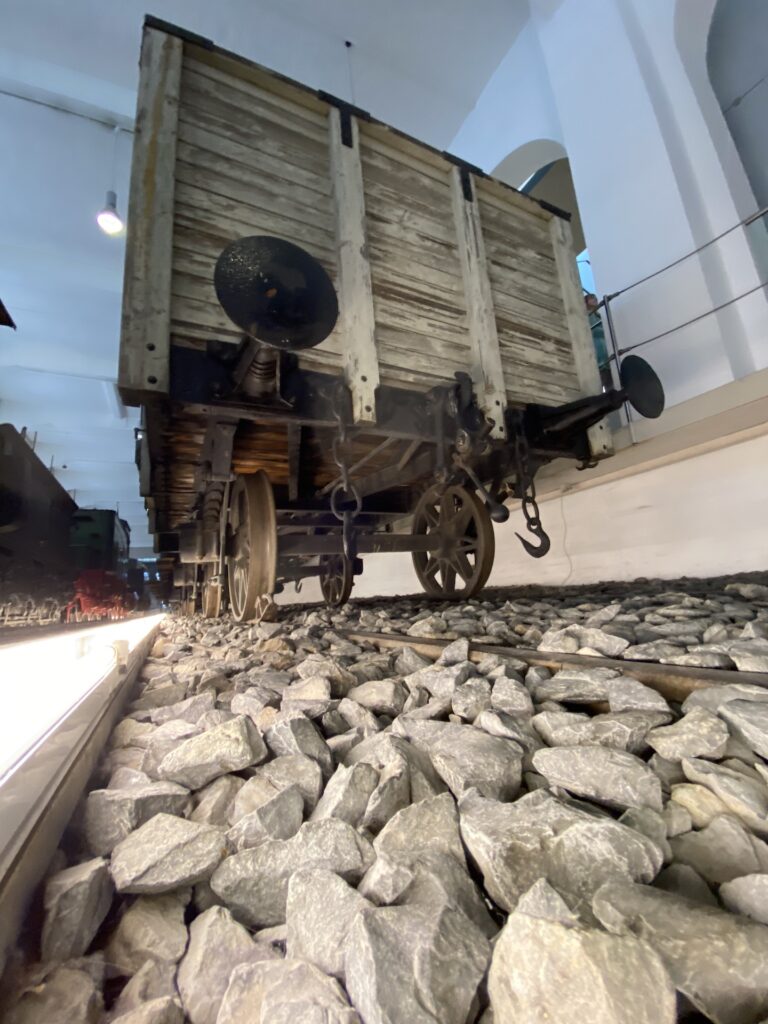

Schöner Brunnen is a beautiful gothic 14th century fountain. It is located in Nuremberg’s main market, next to the town hall, and is one of the top attractions in the city’s Historical Mile.
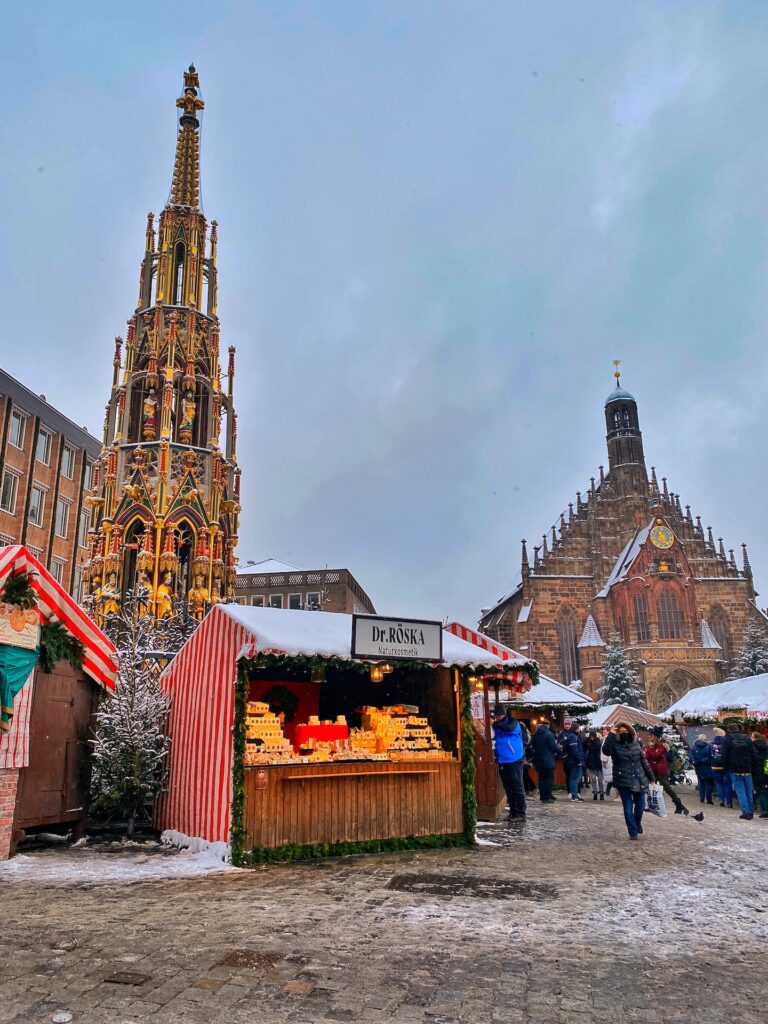
Frauenkirche is a German church on the eastern side of the main market. From the gothic architecture to the church’s sculptures and works of art, this is one of Nuremberg’s most famous icons.
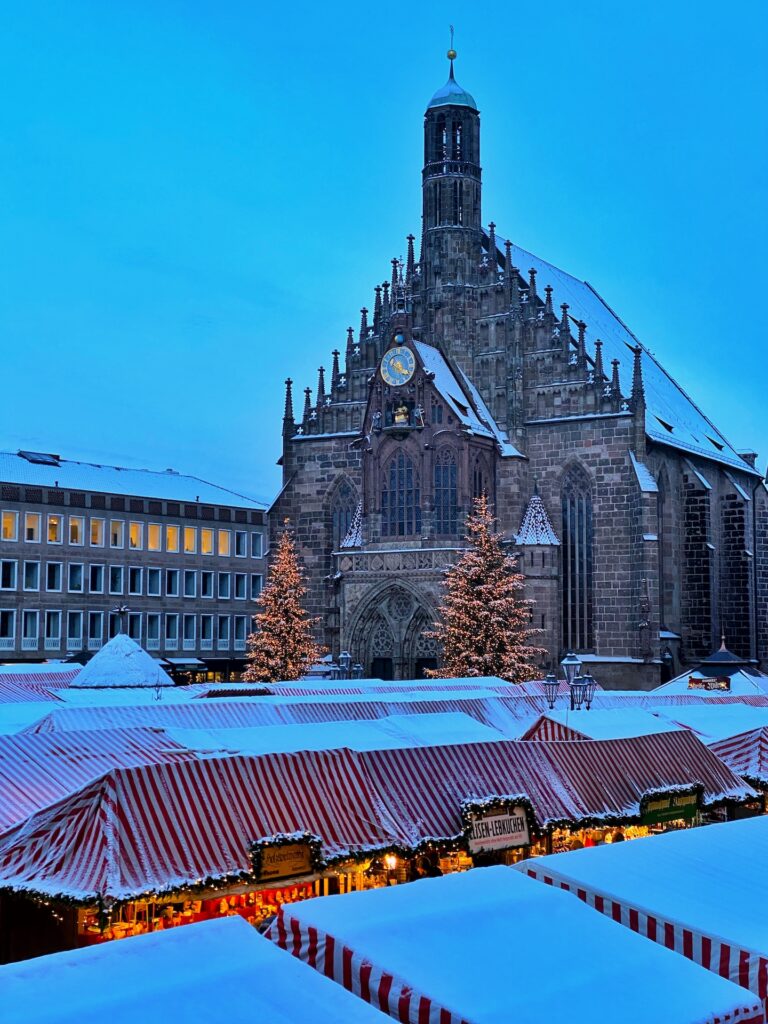

Nuremberg has been a city of toys since the Middle Ages. The Nuremberg Toy Museum is considered to be one of the most well known toy museums in the world, presenting the history of toys over the last 200 years, from the past to the present day.
The museum’s collection contains around 87,000 objects and portrays Nuremberg’s pivotal role as the metropolis of toys in the industrial age. It presents the ‘world in miniature’ in just 1,400 square metres, featuring everything from wooden horses and train sets, to doll houses and more recent toys such as Lego, Playmobil and Barbie.


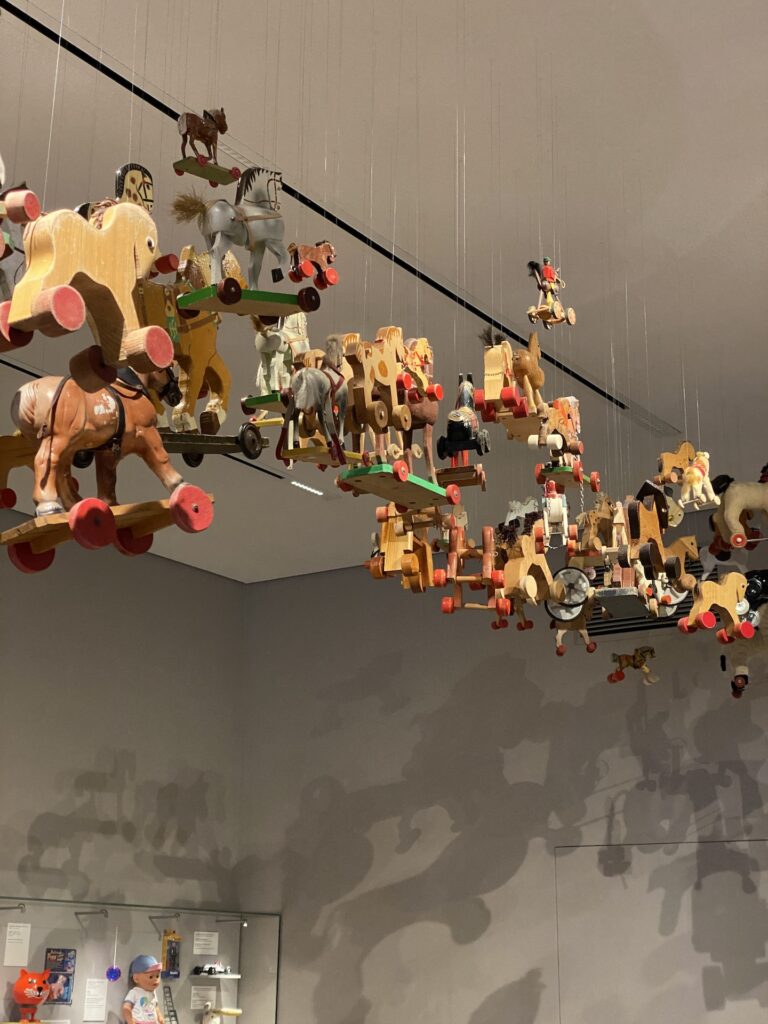


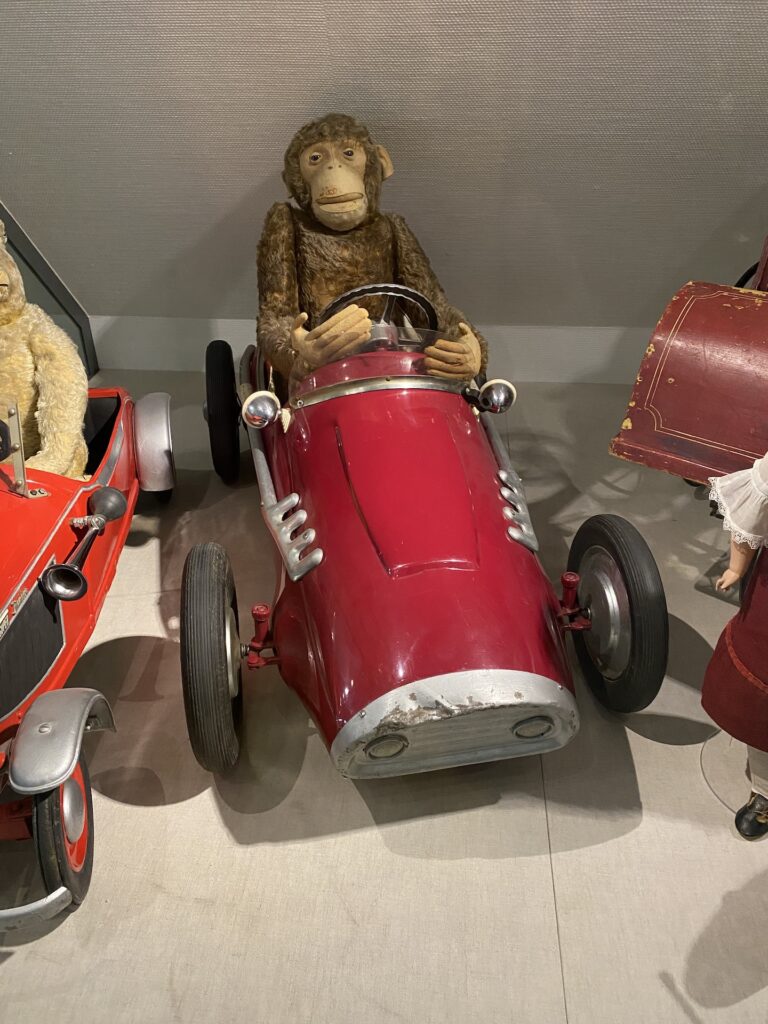
Nuremberg’s New Museum has a curved glass facade which rises over the medieval city walls.
The museum has received many awards for its striking modern architecture and is a venue for contemporary art and design.
The art collection contains paintings, sculptures and photography from 1945 to the present. Its main focus includes Eastern European artists, international works of geometric abstraction and concrete art.
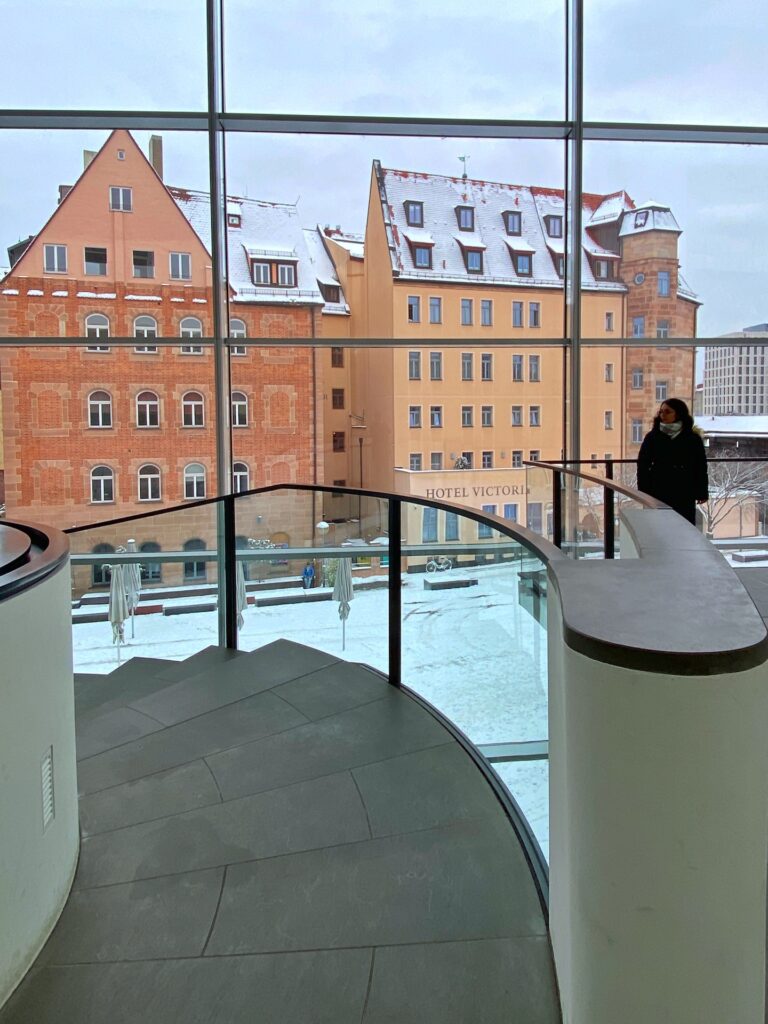
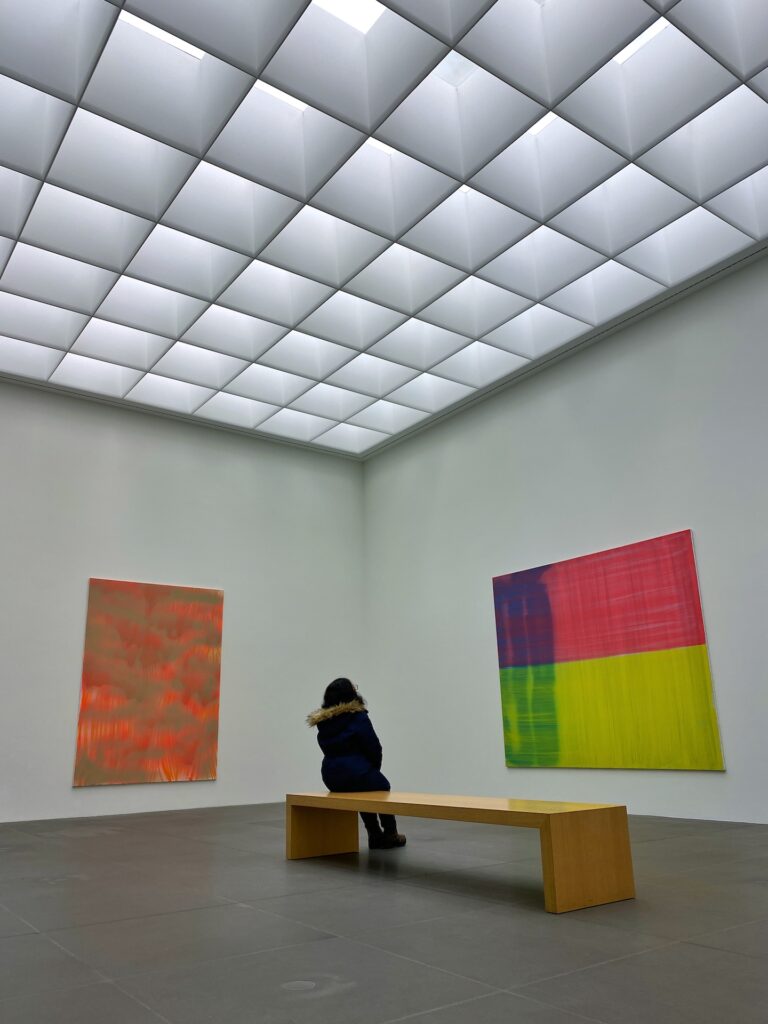
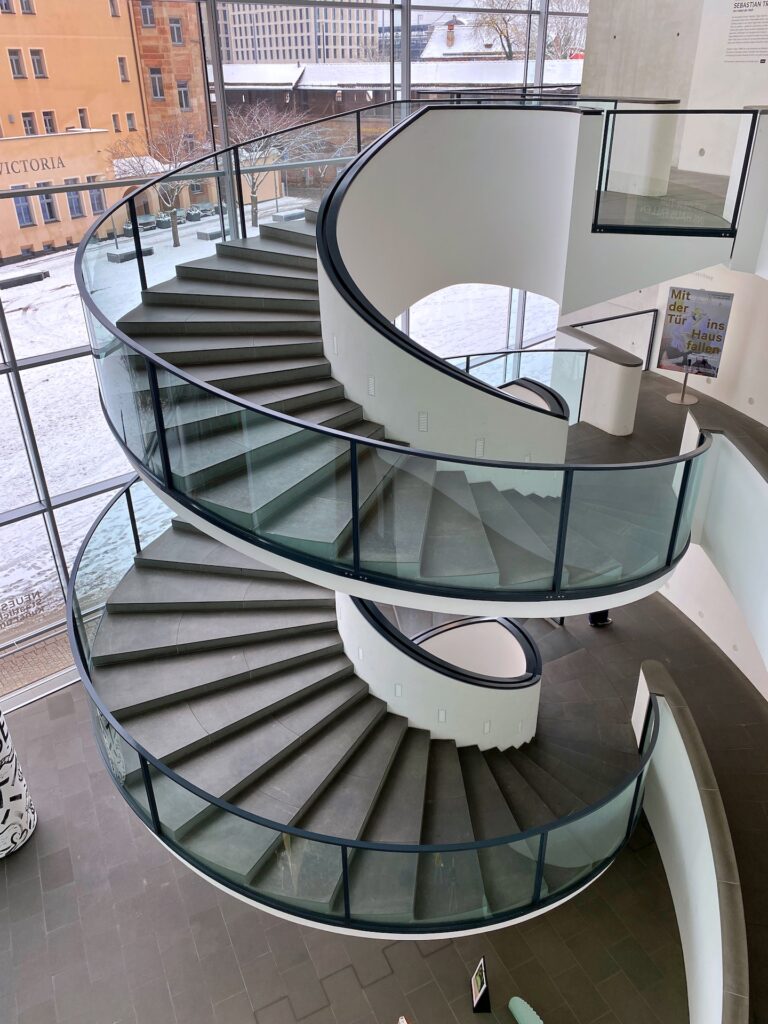



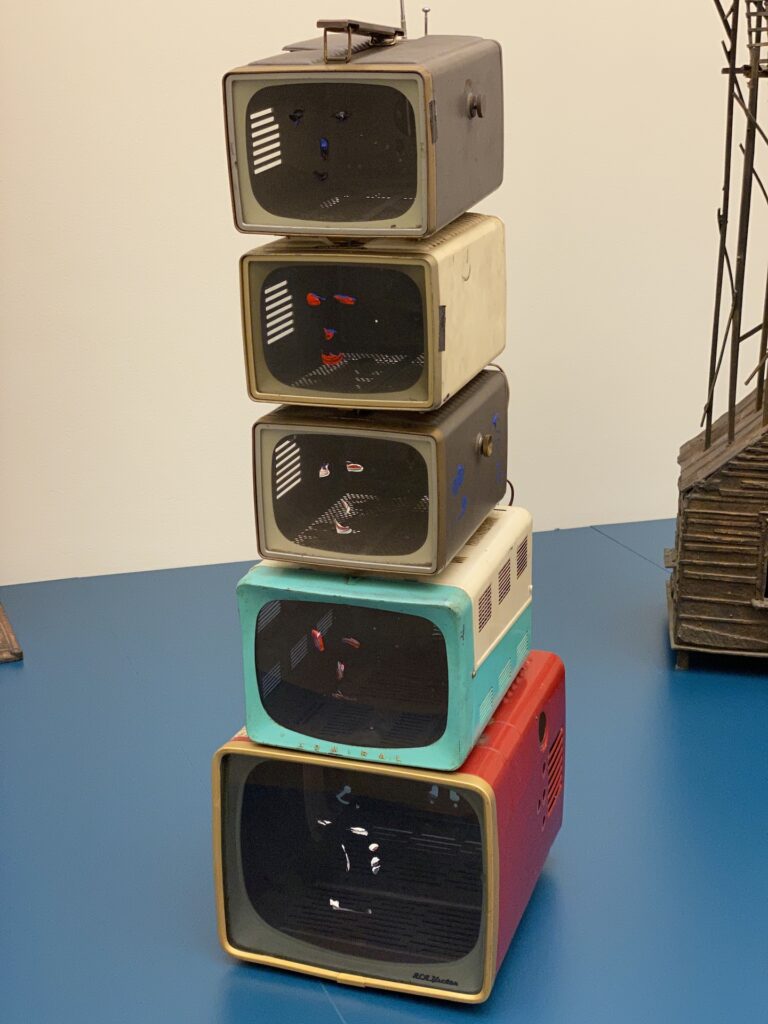

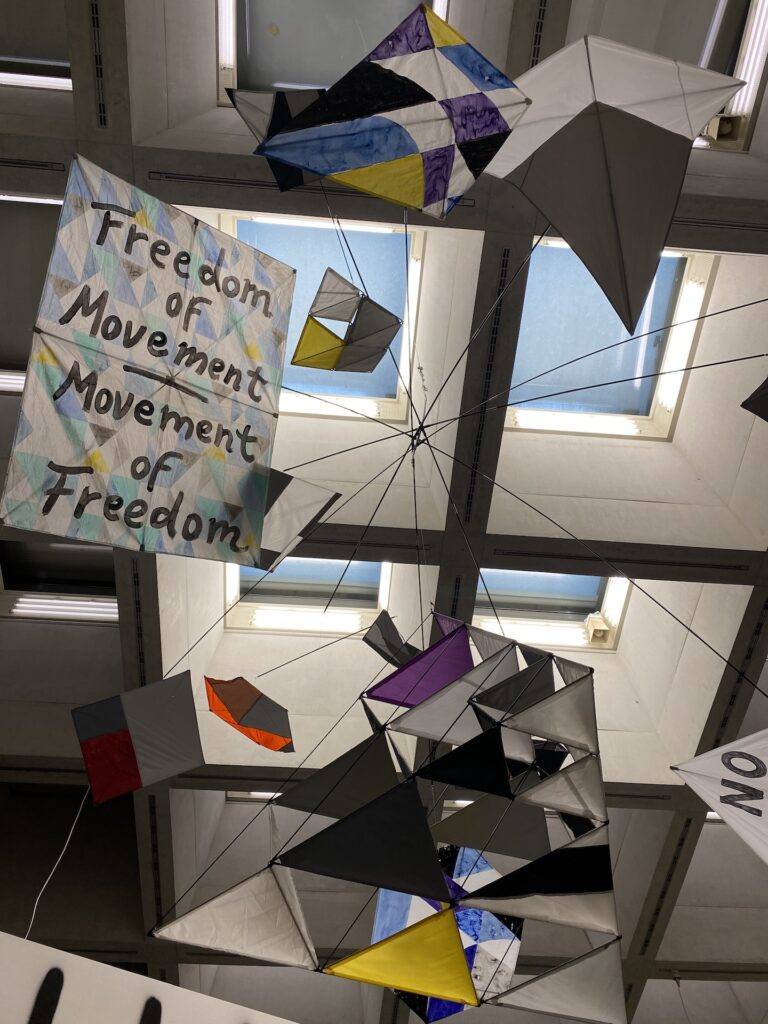
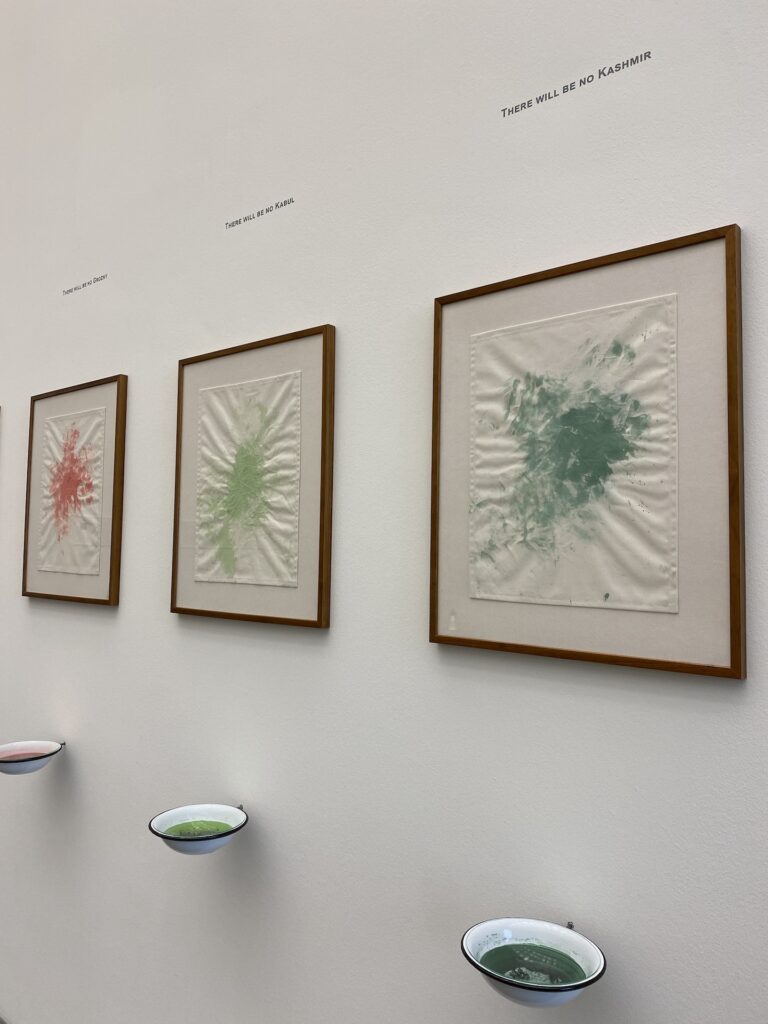
Handwerkerhof, located across the road from Nuremberg Central Station, is a medieval shopping village and German artisan plaza, with traditional wooden buildings and a historic arts quarter – the picture perfect location!
The area is transformed during Christmas time, with stunning decorations, Christmas trees and market stalls selling traditional masterpieces. This is also the spot to visit both during the day and night, to take in the full Chrismassy feel.


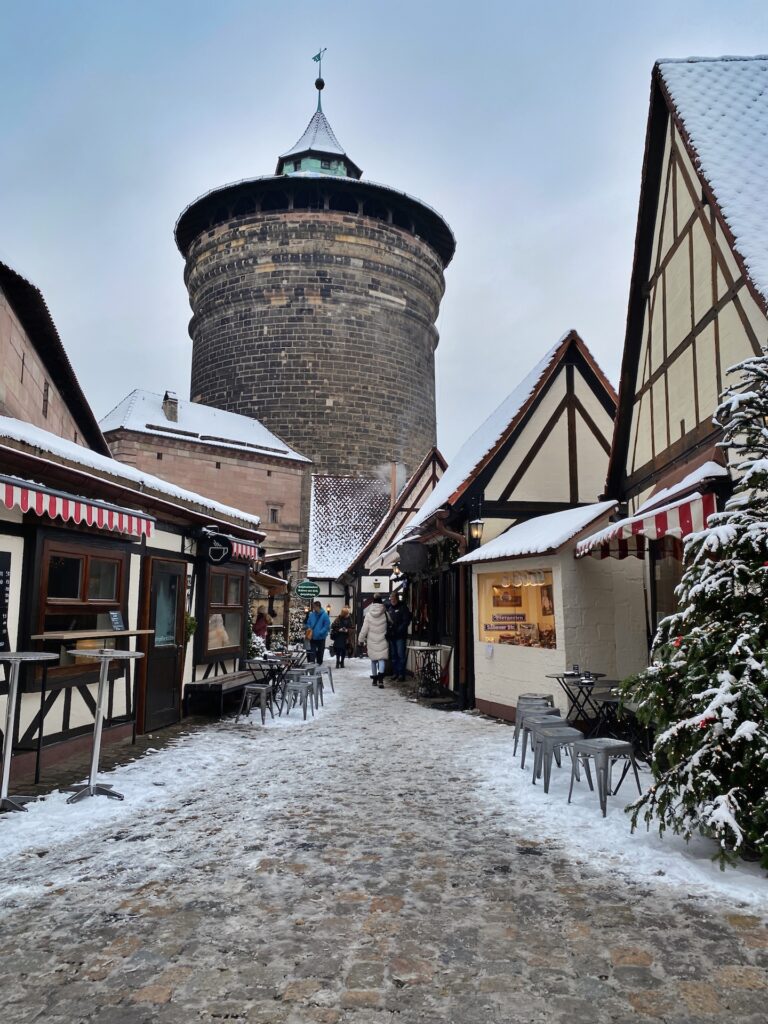
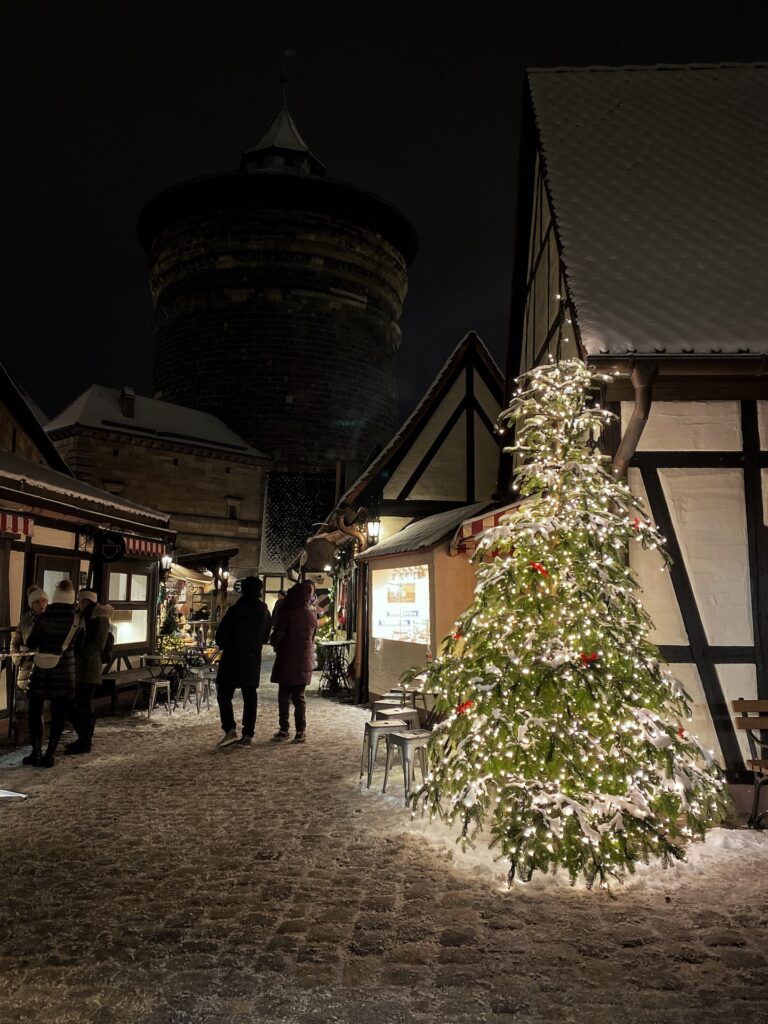
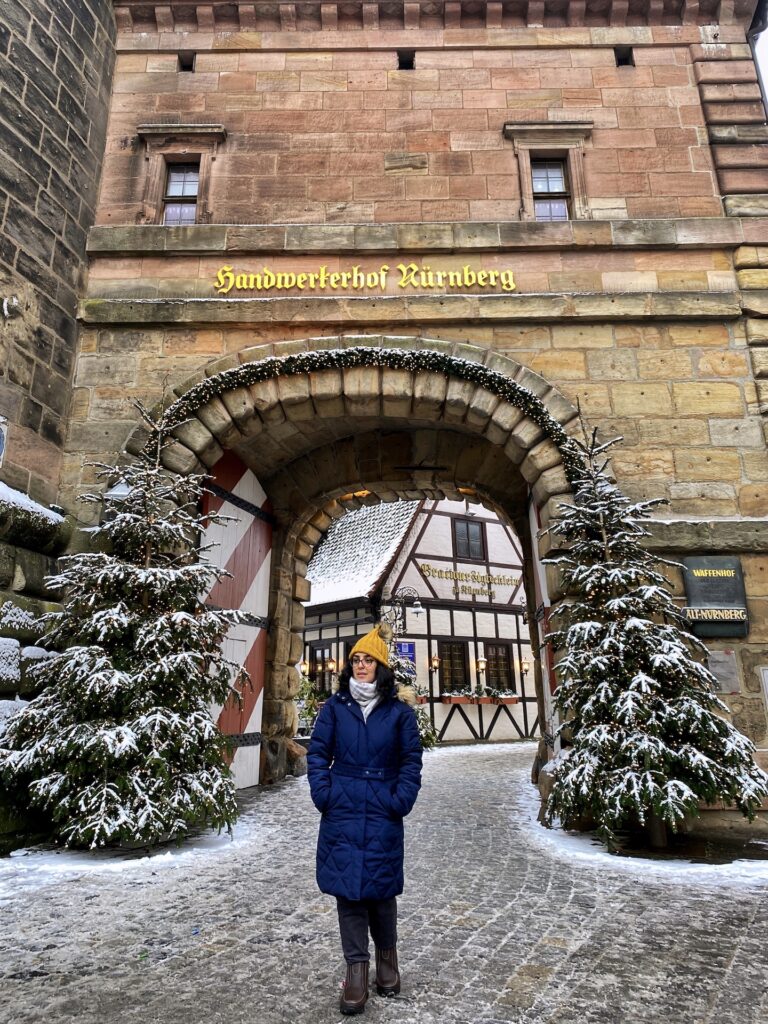
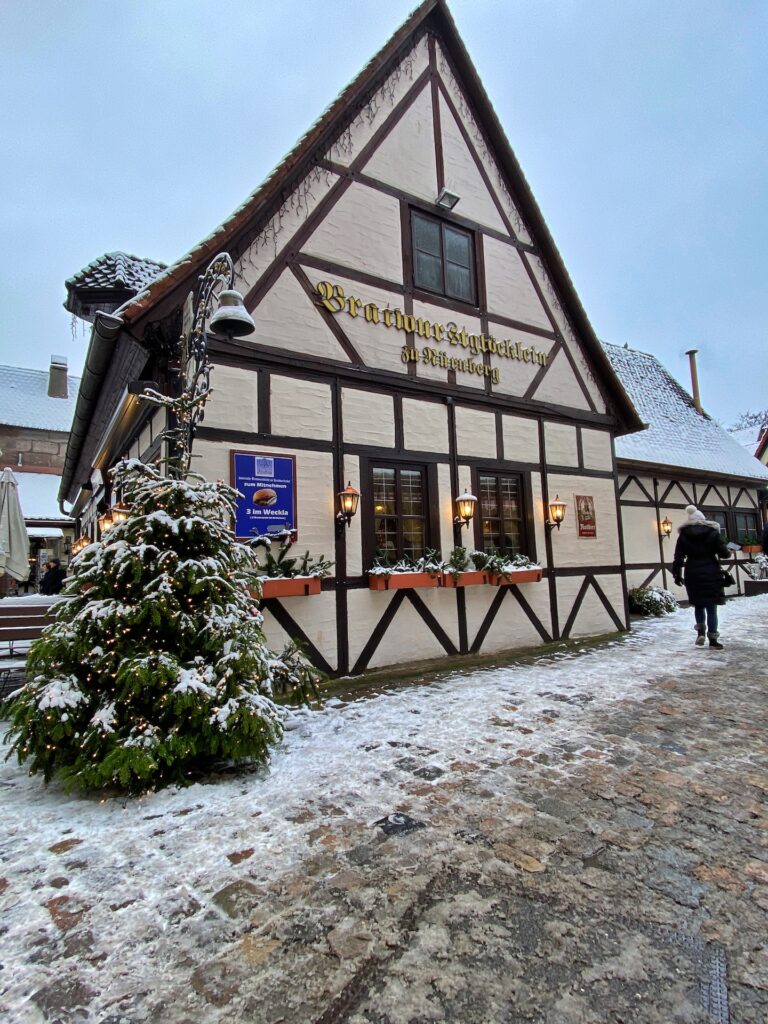
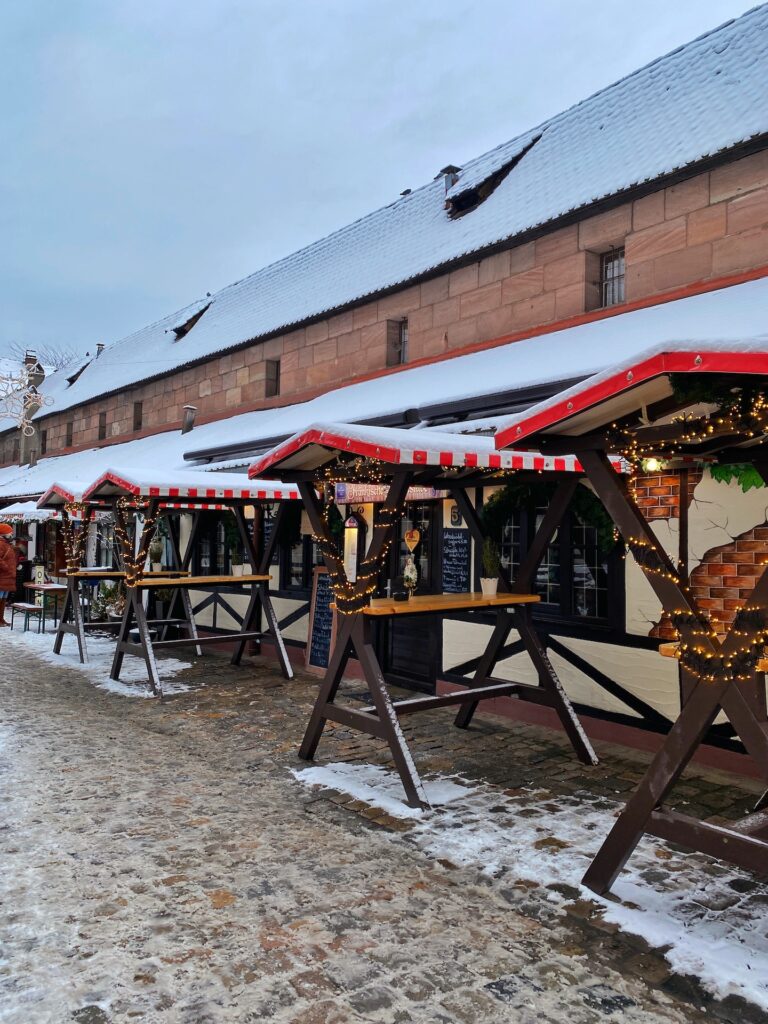
The German National Museum is located in the heart of the city, and offers a journey through 600,000 years of European art, culture and history. This is the largest museum of culture in the country, and a walk through the museum also feels like a trip through the history of German architecture…
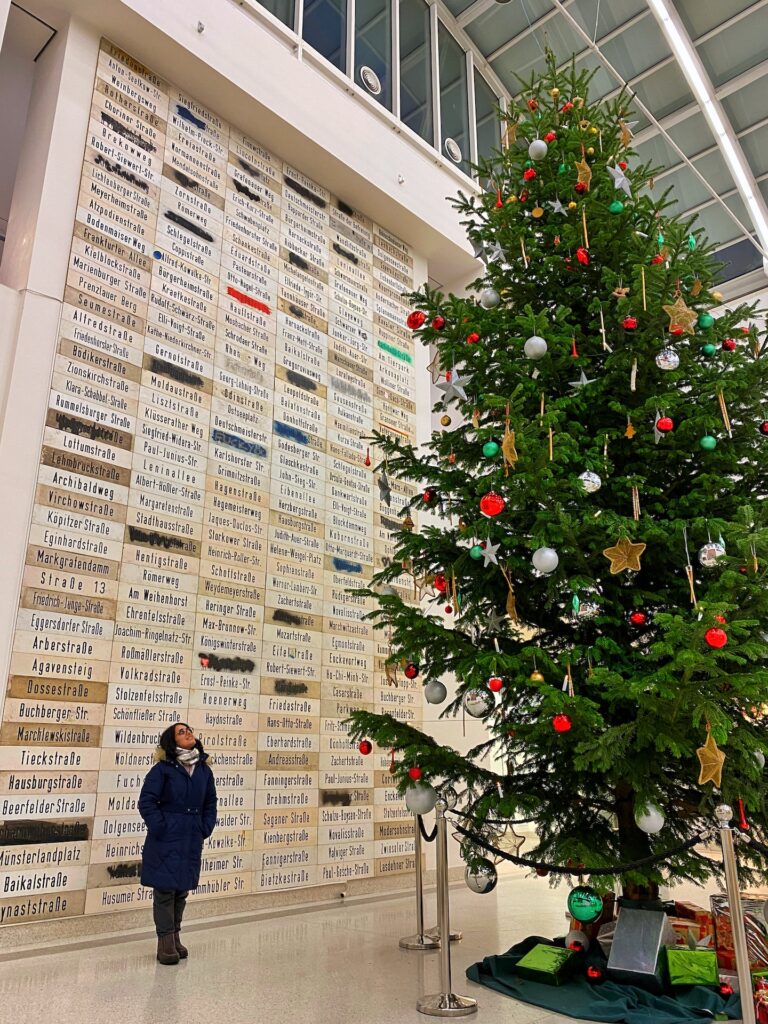
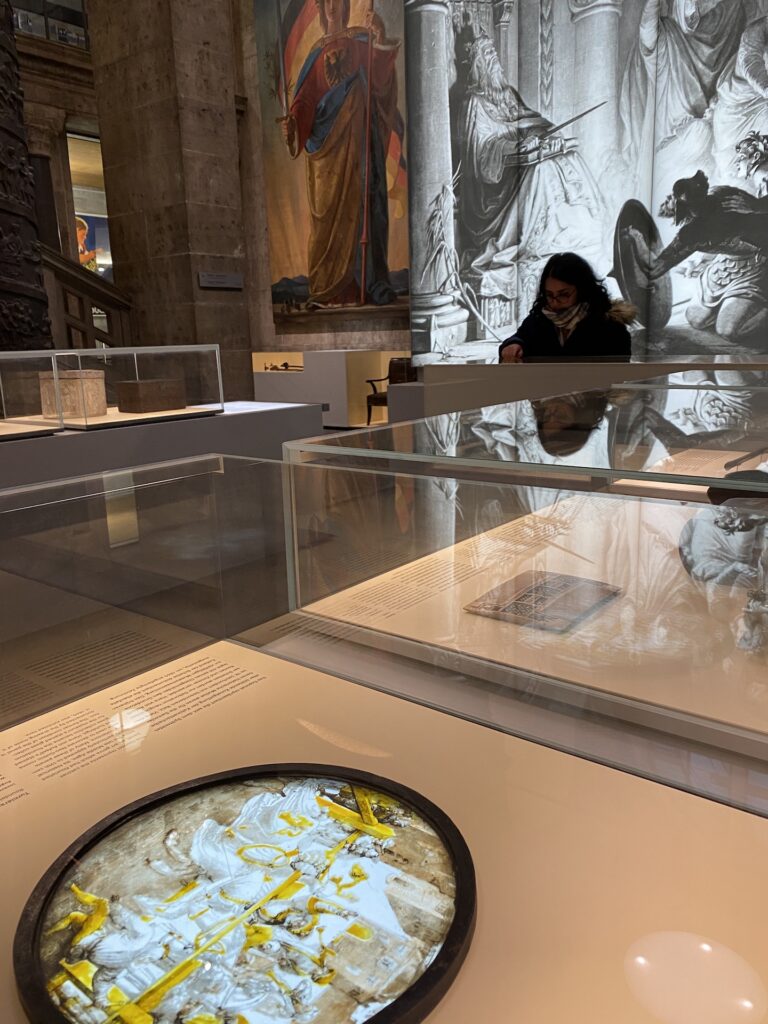
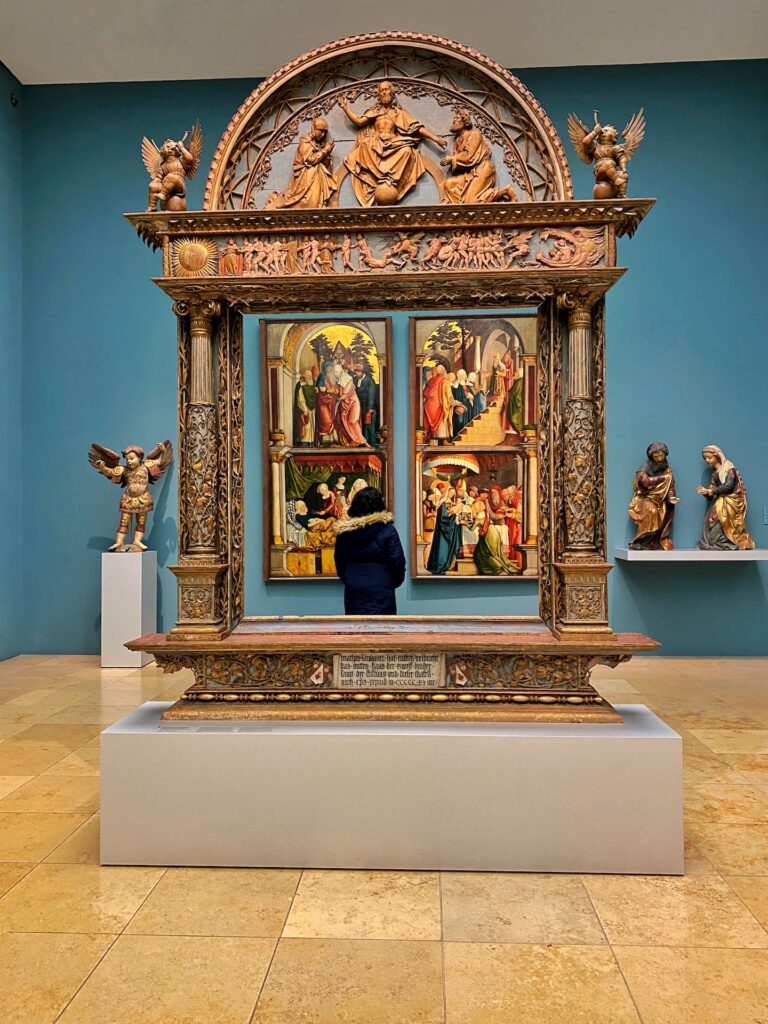
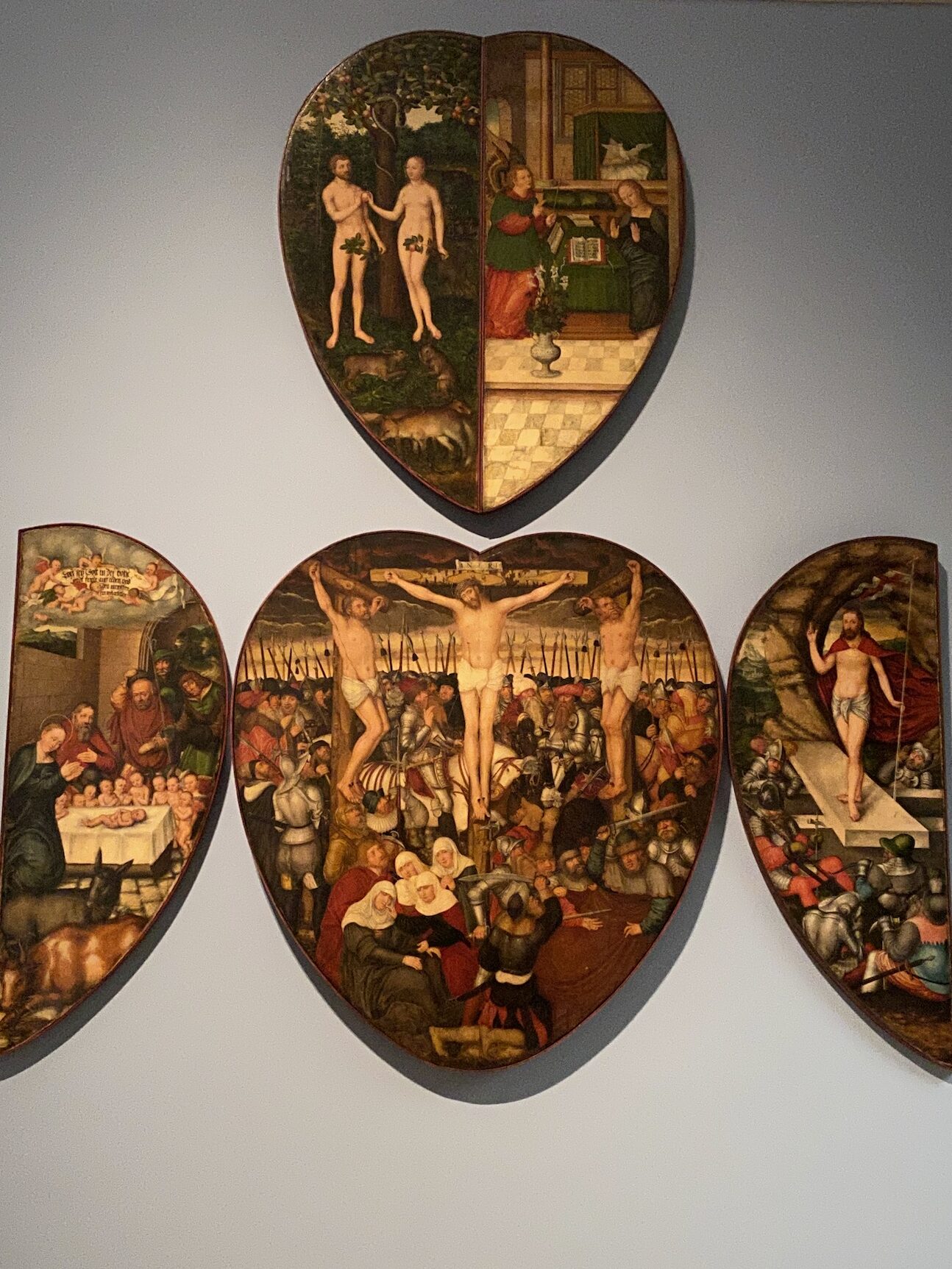
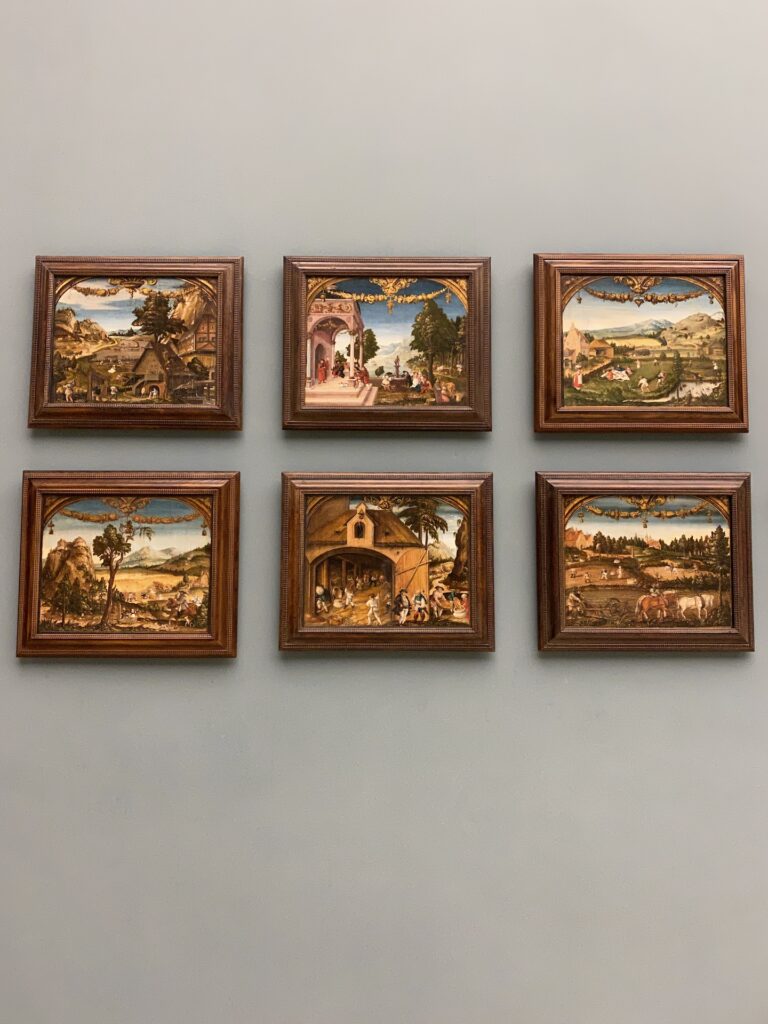
Alongside the Christkindlesmarkt, there are two smaller markets. Kinderweihnacht is a special children’s Christmas market. Young kids have the opportunity to bake their own gingerbread, draw on glasses, write a letter to the Christkind and ride on the nostalgic carousel and the miniature Ferris wheel.

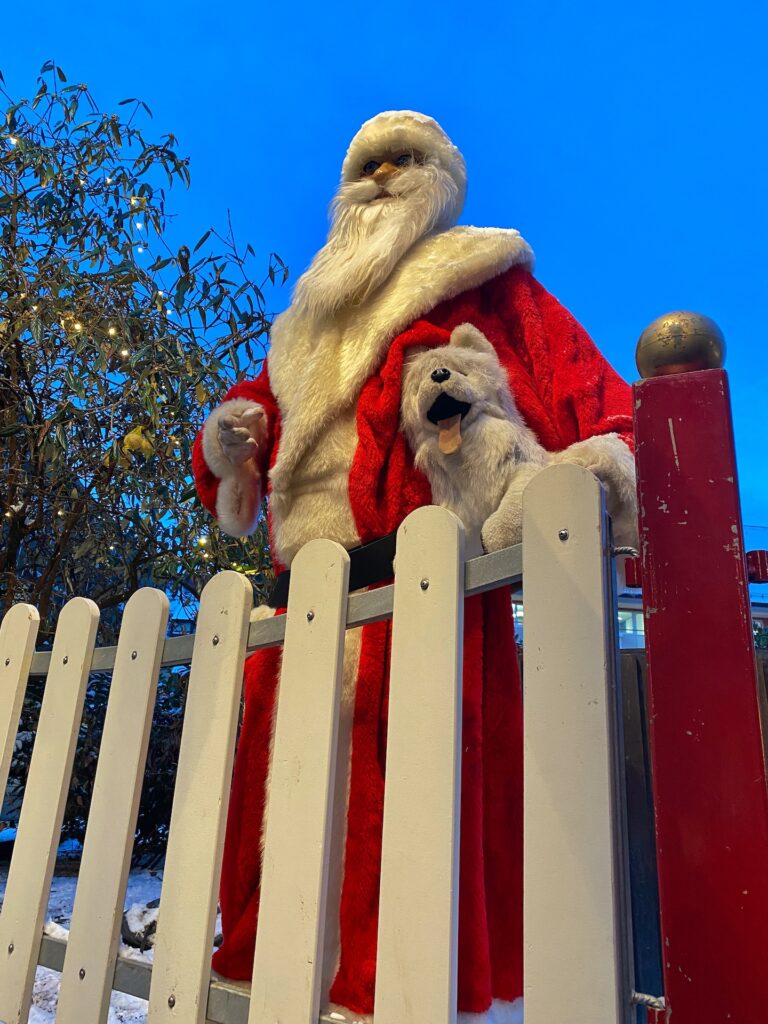

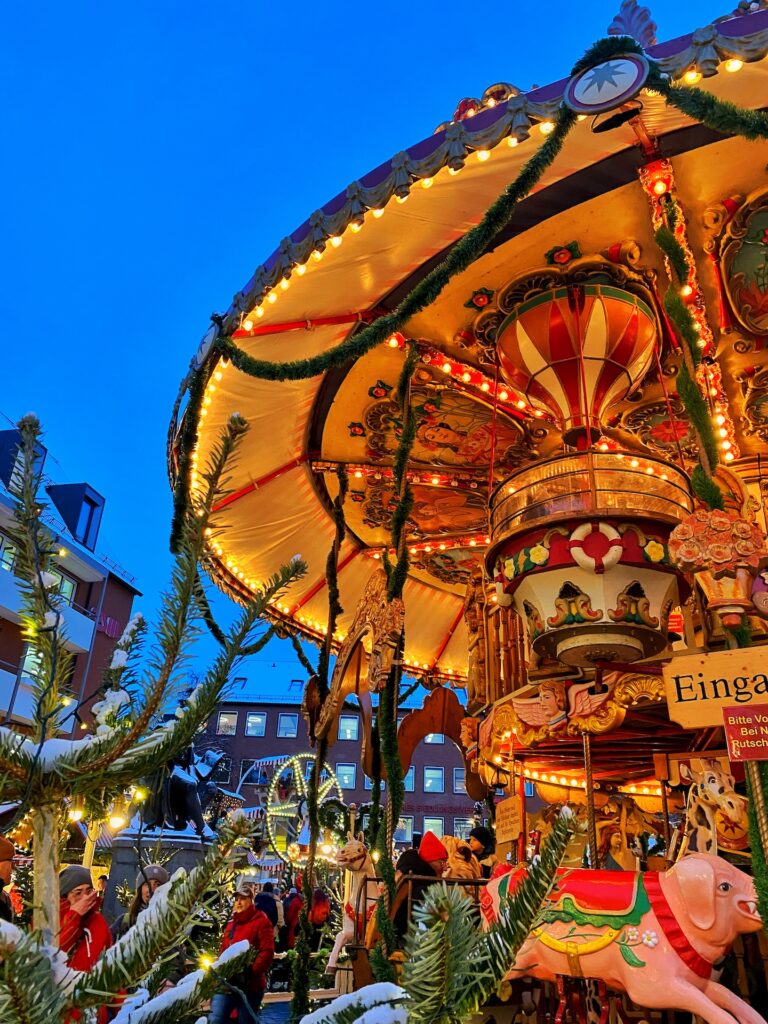
On the square just north of the Christkindlesmarkt, the Christmas Market of Sister Cities adds some international flair to the festivities. With a wide range of indigenous arts and crafts, there are stalls from many of Nuremberg’s sister cities including Antalya, Glasgow, Krakow, Shenzhen, Santiago and Verona.
A tour of the Christmas markets is a perfect way to explore and enjoy all the festivities Nuremberg has to offer.
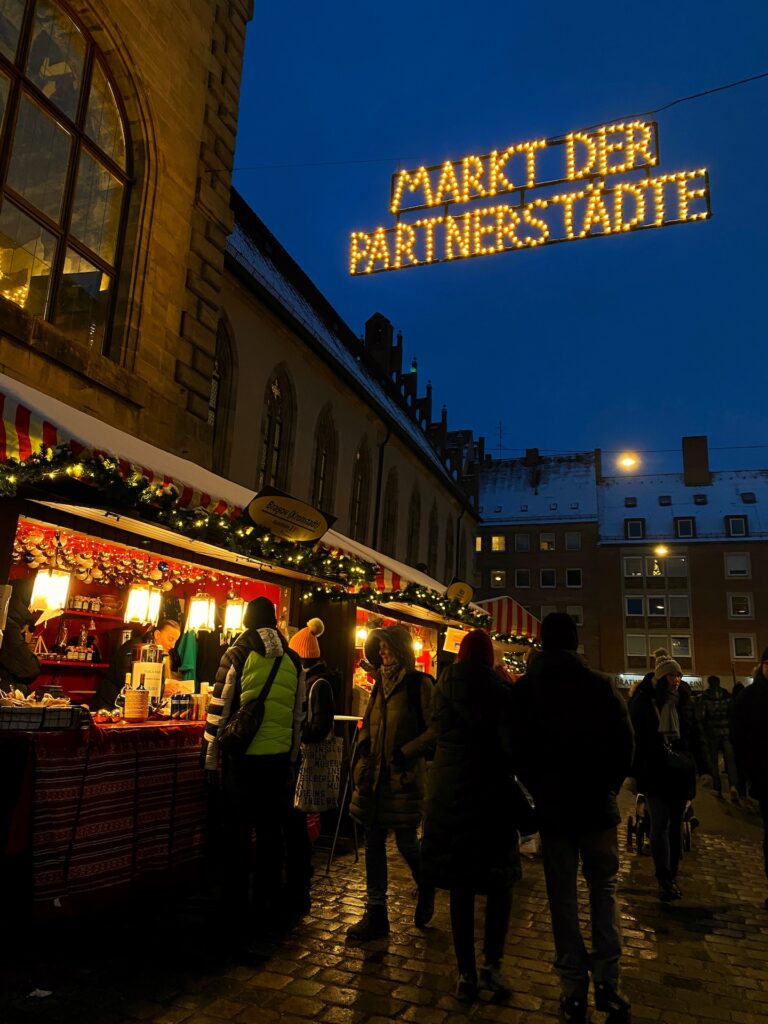



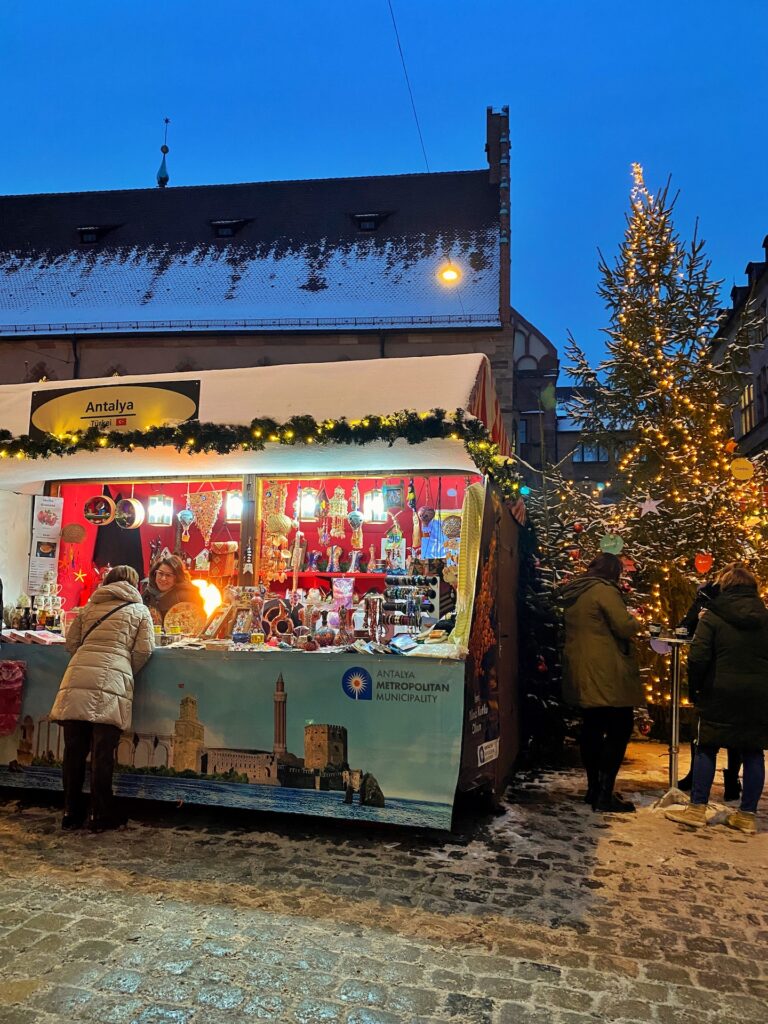
The Nuremberg U-Bahn is Germany’s first driverless metro system, with the trains travelling at 100-second intervals and always on time. The impressive driverless technology comes from Siemens.
You can experience riding on a driverless train as soon as you touchdown in the city, with direct trains straight from the airport, reaching the city centre in a rapid 10 minutes!
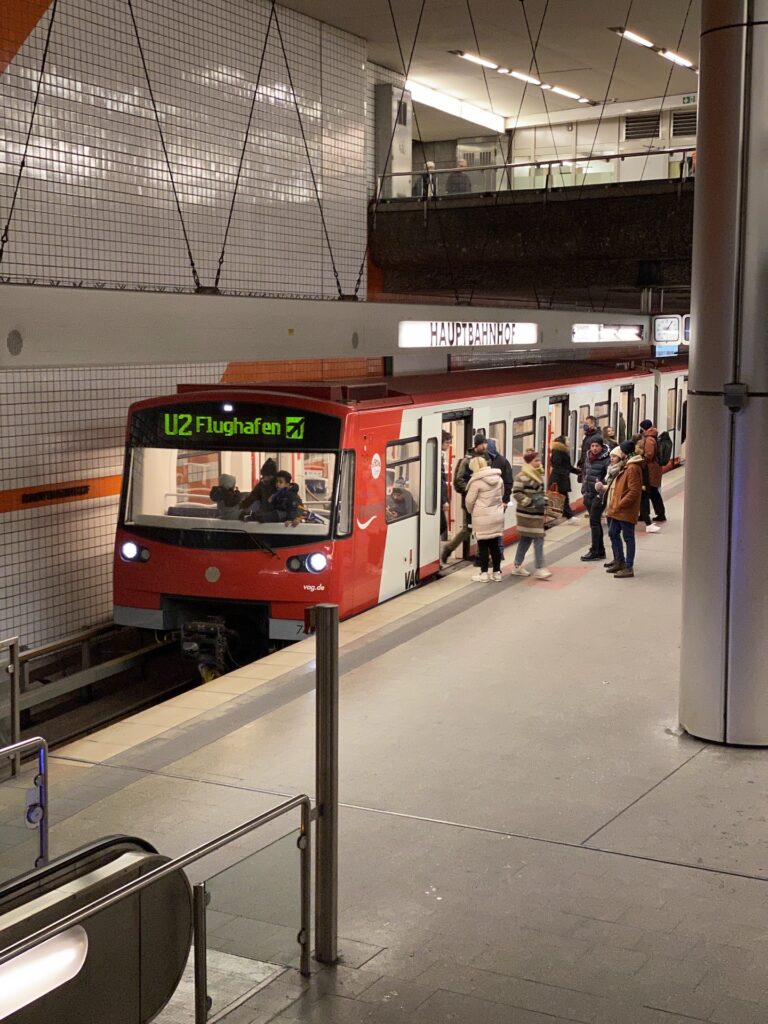
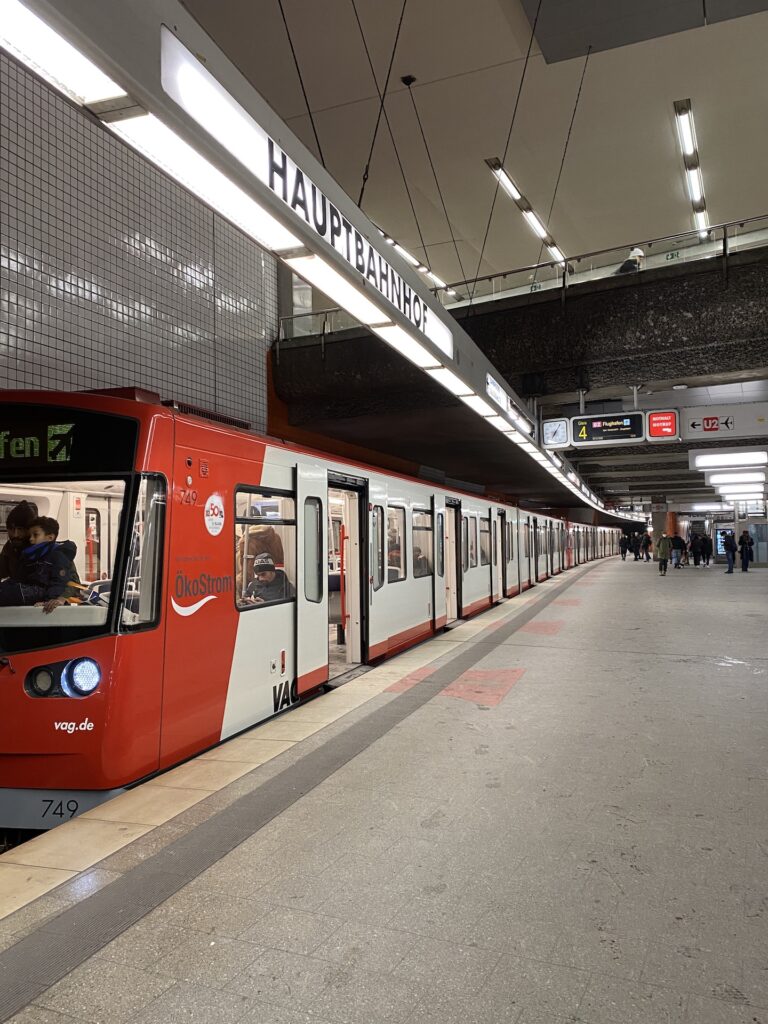
Nuremberg is a very picturesque city, with cobbled streets and timer-framed houses defining the town, together with scenic and reflective river spots. Have your camera to hand when walking around the city to capture this beautiful city – I took all these shots on my phone!

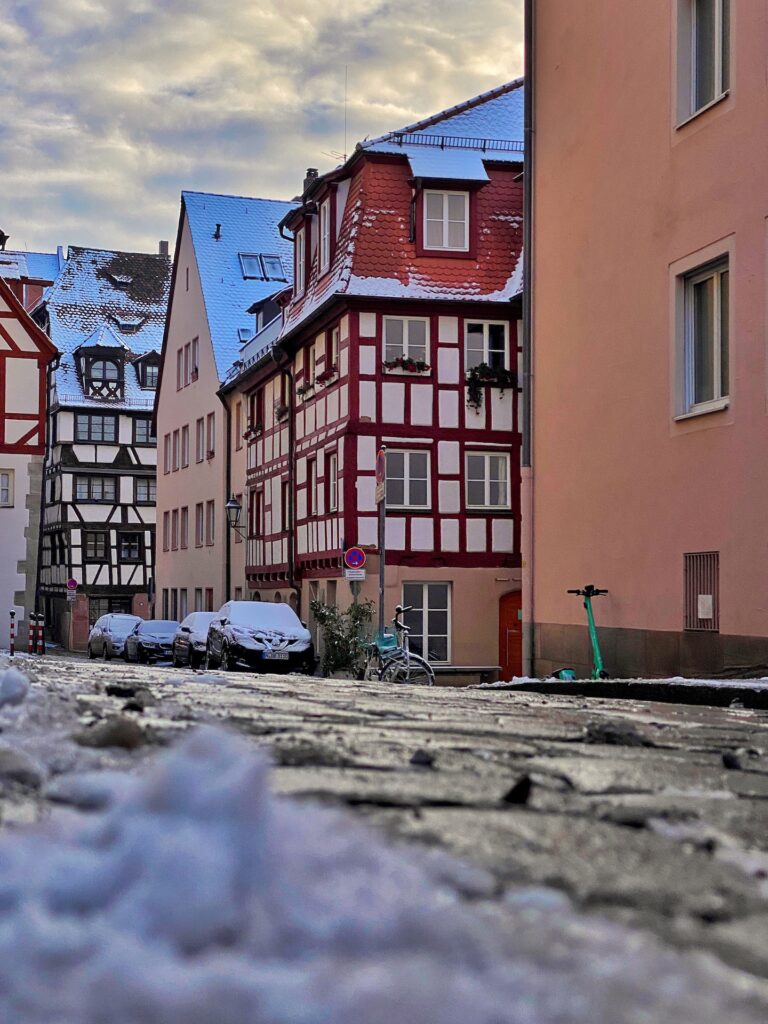

Before you leave Nuremberg, make sure you taste Lebkuchen. This is a German gingerbread and it is famously known to be made in Nuremberg, where the bakeries use centuries-old recipes to create them. I had the original Nuremberg Lebkuchen from Lebkuchen-Schmidt and it tasted incredible!
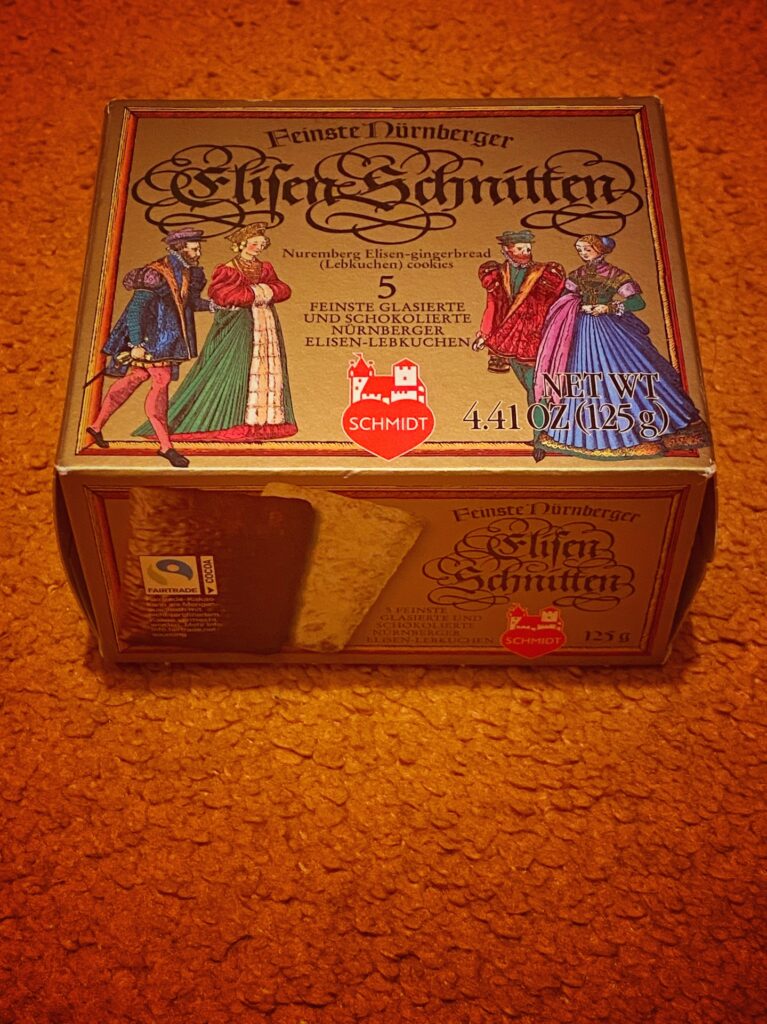
The Documentation Centre Nazi Party Rally Grounds is a museum in Nuremberg, housed in the remains of the Congress Hall of the former Nazi party rallies. The National Socialists held their Party Rallies in Nuremberg from 1933 to 1938.
During the current remodeling of the Documentation Centre, an interim exhibition provides a comprehensive picture of the history of the site and of the Nazi Party Rallies.

Leave a Reply